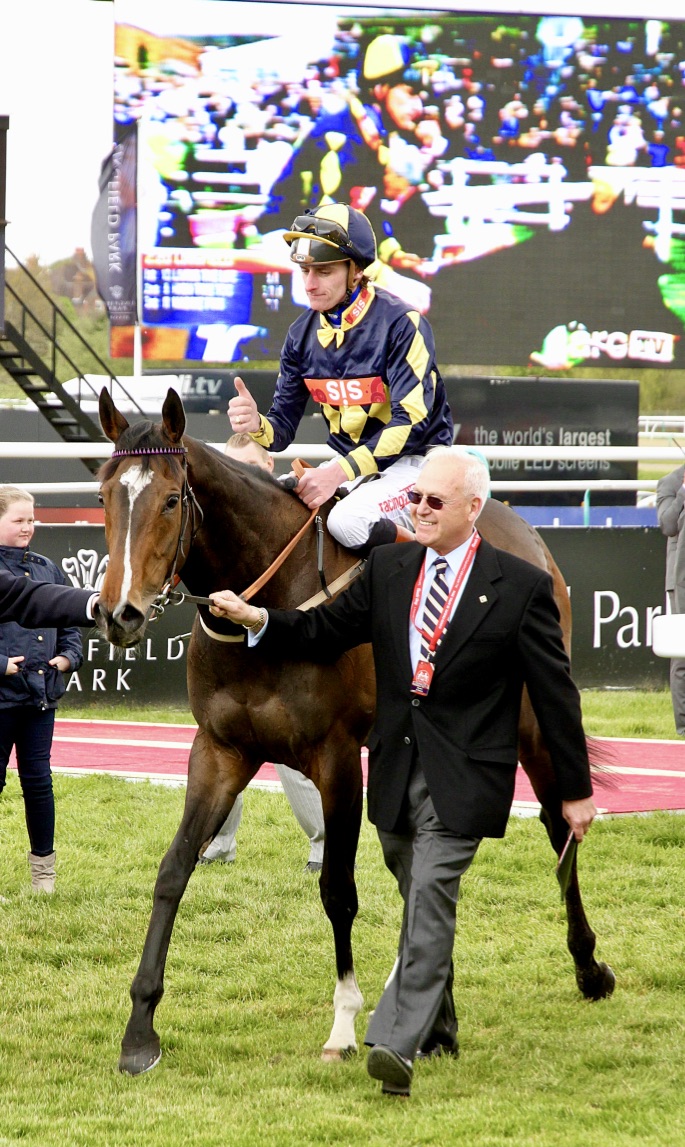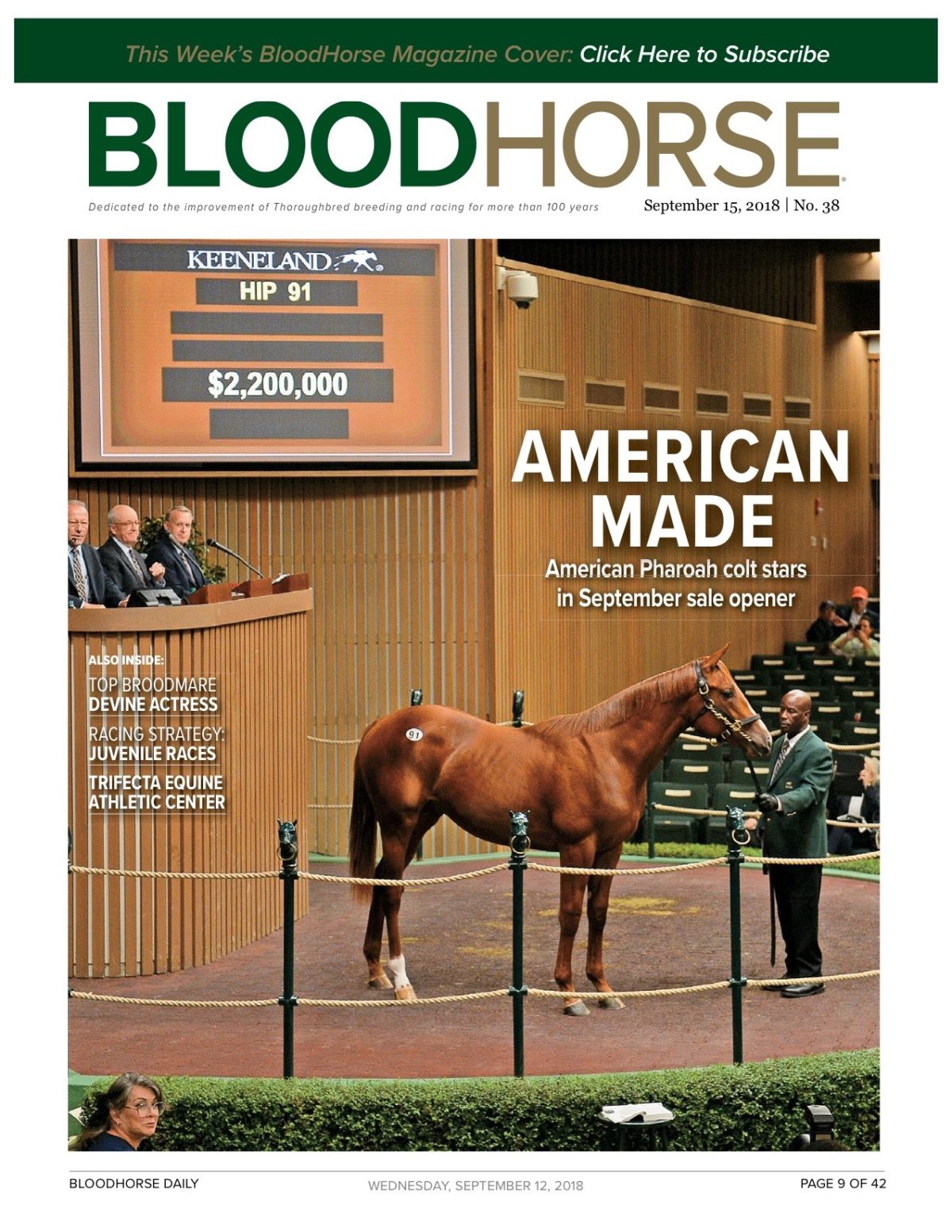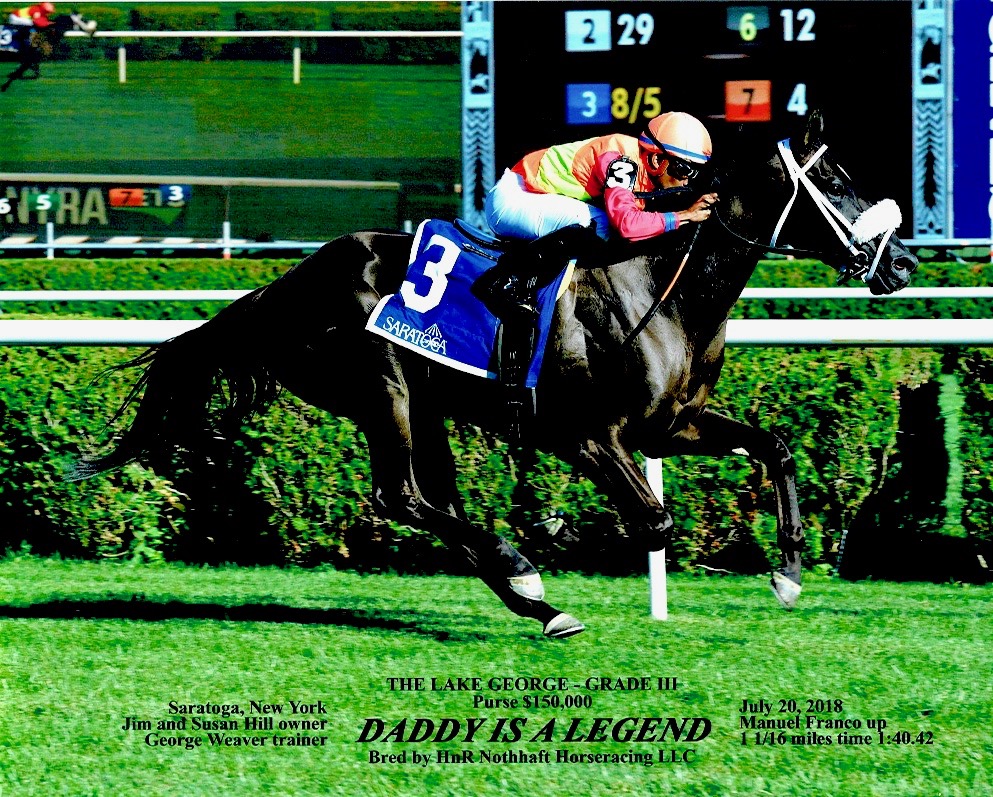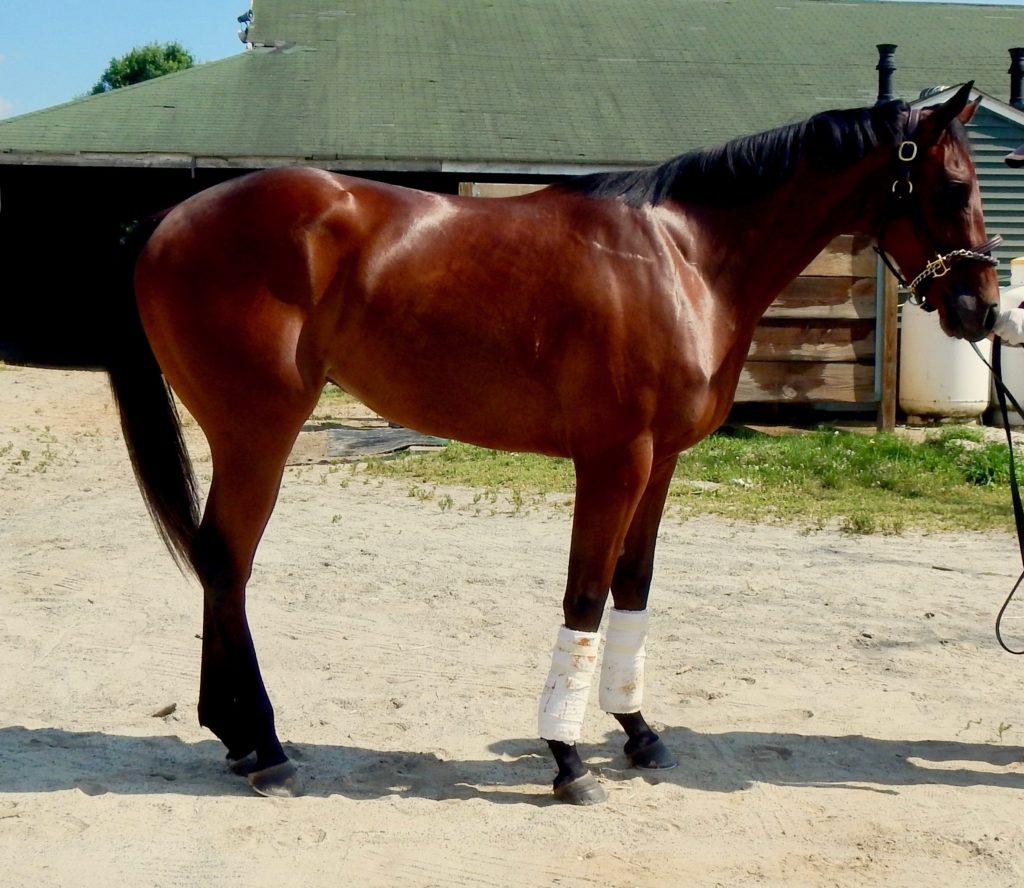Category: News
Pennsylvania's Thoroughbred Elite-Finest City-Everything Happens for a Reason
by Averie Levanti for Pennsylvania Horseracing Association
In a typical year, 1,600 Pennsylvania-breds compete on the racetrack for average earnings of $27,600. Of the 50,000+ who have raced across the globe since 1985, only an elite group of 31 horses have broken the seven-figure mark in earnings. Over the course of summer 2020, the Pennsylvania Horse Racing Association will be chronicling a ten-part series featuring the select group of Pennsylvania-breds who reached the unique and rare accomplishment of $1,000,000 in racetrack earnings. Join us to celebrate and remember some of the greatest racehorses the Keystone State has produced.
When Hank Nothhaft attended the 2011 Keeneland November Sale, he had a specific goal in mind: purchase a handful of broodmares to support his newest stallion acquisition, the Breeders’ Cup Sprint winning Silver Train, who Nothhaft had purchased a couple of months prior and moved to the Pennsylvania branch of Northview Stallion Station.

Alongside his bloodstock agent Carl McEntee, Nothhaft ended up taking home three new broodmares. One was Be Envied, a stakes placed daughter of Lemon Drop Kid who was in foal to the up and coming stallion City Zip. Sent to Northview PA, Be Envied foaled out her chestnut filly on March 28th, 2012.
Nothhaft named his newest filly City Envy, and she quickly began to bring raving reviews. McEntee advised Nothhaft that the filly would be a great weanling sale prospect, and the decision was made to prepare for the 2012 Keeneland November Sale after she x-rayed clean. Her high expectations led Nothhaft to set her reserve at $50,000, but they expected her to bring as high as $150,000 with all of the buzz surrounding her.
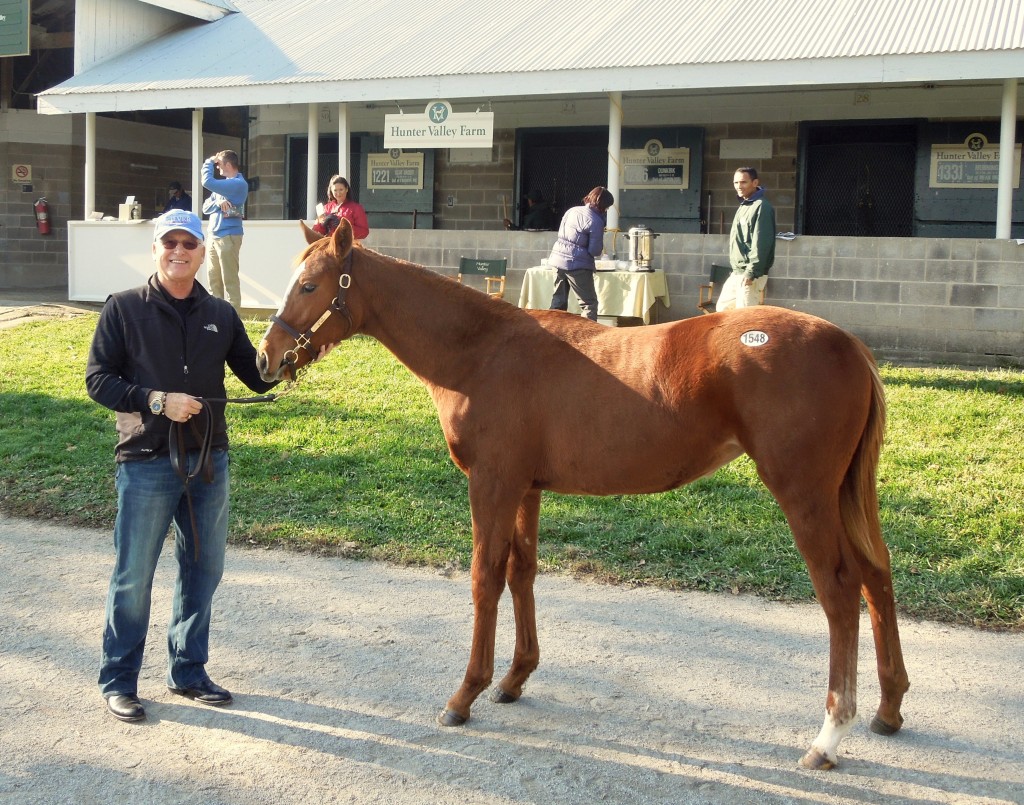
To the surprise of Hank Nothhaft and everyone else involved with City Envy, she hammered right on reserve at $50,000 for Cobra Farm. What had happened? How could they have been so wrong? Soon after, it was discovered that City Envy was not vetting cleanly and happened to have a cyst on a stifle, a problem that was not detected on her initial x-rays. Nothhaft dealt with mixed emotions following the sale knowing he would not have sold his filly if he had known she had had an issue.

City Envy was sent to new owners Cobra Farm and prepared as a pinhook for the 2013 Keeneland September Yearling Sale. She brought $85,000 as a yearling and was purchased on behalf of the San Diego-based stable Seltzer Thoroughbreds. Seltzer ended up renaming City Envy to Finest City as an ode to their hometown. Once settled into California, the newly- named Finest City was turned over to a third generation horseman, albeit a brand new trainer, in 28-year-old Ian Kruljac.
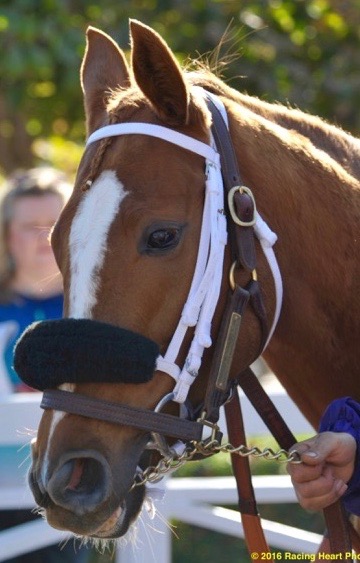
Finest City developed a reputation as a quirky horse, and she dealt with a handful of minor physical maladies. Kruljac was patient with his filly, and his small stable allowed him to give her the attention she needed. His careful and patient handling ensured that Finest City did eventually make it to the races, and she debuted at Del Mar in July of her three-year-old season, finishing a close second at odds of 33-1.
Finest City made her next start on August 23, 2015, romping to an 8 ½ length maiden victory at Del Mar. Her impressive score earned her a try in stakes company next out, and she finished a respectable fourth in the Unzip Me Stakes in her turf debut. Returning to the main track, Finest City rolled to another easy victory at Del Mar, this time taking an allowance event by 3 ¼ lengths. Her short first year ended with another second place effort in allowance company before a dull effort in the G1 La Brea on a quick turnaround. It was the last time she finished outside of the superfecta for a long time.
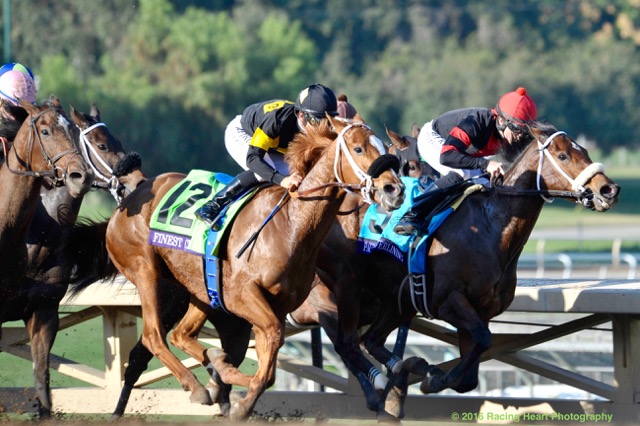
Starting her four-year-old campaign in the Grade 2 Santa Monica Stakes at Santa Anita, Finest City suffered a heartbreaking loss after dueling with 64-1 longshot Lost Bus for the duration of the race before falling a head short at the wire. She proceeded to finish third in allowance company and fourth in the G3 Las Flores Stakes before stepping back up into Grade 2 company in the Great Lady M Stakes at Los Alamitos

Sent off at 8-1 in the field of seven, Finest City settled towards the back of the pack before making a four-wide bid around the turn to put her within contention. In a perfectly timed ride, the filly ran down the leading pair of Las Flores winner Fantastic Style and Santa Monica winner Lost Bus to enact her revenge by 1 ¼ lengths.
Fresh off her first graded stakes triumph, Finest City tried Grade 1 company in the Vanity Mile, where she faced a dynamic duo of champions in Beholder and Stellar Wind. In an incredibly respectable effort, she finished third
while beaten only 2 ¼ lengths by Beholder, who would go on to win her second consecutive Champion Older Mare title by year’s end.
Having shown her versatility with an ability to handle turf in the past, Finest City returned to the turf for her next two races. After finishing a close fourth in the Grade 2 Yellow Ribbon Handicap, the filly stretched out to the furthest distance of her career in the 11/8 mile Grade 2 John C. Mabee Stakes. Finest City put up a gutsy effort at a distance that was probably past her prime, closing a 2 length advantage on Avenge in the final furlong to lose by a diminishing head.

With the Breeders’ Cup looming two months out, Finest City trained up to the world championship event with her sights set on a return to the dirt in the Fill-y & Mare Sprint division. Everything was coming together perfectly for Hank Nothhaft, who also planned to run his filly Living The Life in the same race. Living The Life was entering the Breeders’ Cup off a close second in the G2 Presque Isle Masters in her bid to win the race for a third consecutive year.

Nothhaft had his tickets and travel plans in order to cheer home both a filly he owned and a filly he had bred when disaster struck. Living The Life turned up lame after her final workout for the Breeders’ Cup. In the immediate air of disappointment, Nothhaft cancelled his travel plans and gave away his Breeders’ Cup tickets. It was a decision he would end up regretting. tickets. It was a decision he would end up regretting.
Finest City drew post twelve in the field of thirteen. Despite having not won since April, she was sent off as the fifth betting choice at 8-1 for her consistent, well-placed efforts. When the gates sprung, Hall of Fame rider Mike Smith hustled Finest Cit-y towards the front, locking into a three-wa-y speed duel with Gloryzapper and Paulassilverlining. The trio set down blistering fractions of 21.98 for the opening quarter and 44.82 for the opening half.
With Gloryzapper falling away as the field rounded the turn, Finest City and Paulassilverlining turned into the stretch as one. Defending champion Wavell Avenue was catapulting from the back of the pack to range up alongside the dueling pair. Finest City finally gained an advantage over Paulassilverlining before being confronted with a new challenge from Wavell Avenue. Regardless, Finest City found it within herself to hold off her rival for the final half furlong, and she soared under the wire ¾ length in front.
Finest City’s score in the Filly & Mare Sprint was the fourth victory at the Breeders’ Cup World Championships for a Pennsylvania-bred and the first in twenty-four years. It was a first for many involved: the first Grade 1 victory for the fill-y herself, the first for Seltzer Thoroughbreds and young trainer Ian Kruljac, and the first for Hank Nothhaft as a breeder. At year’s end Finest City was named Pennsylvania-bred Horse of the Year and won the Eclipse Award for Champion Female Sprinter.
A few hours before she was officially christened a champion, Finest City made her five-year-old debut in the G2 Santa Monica. She went one better than the year before, cruising to an easy 3 ¾ length victory in wire to wire fashion. The Santa Monica would ultimately end up being the final win for Finest City’s career, but she remained consistent through year’s end with second place efforts in the G1 Santa Margarita and the G1 Humana Distaff and thirds in the G1 Beholder Mile and G2 Great Lady M.
Finest City still intended to defend her title in the Breeders’ Cup, and Hank Nothhaft made sure not to miss out the second time. On November 4, 2017, the consistent, hard-trying mare made the final start of her career at the world championships, but a repeat was not meant to be. Finest City turned in the poorest effort of her career when eighth in the field of fourteen.
Despite the disappointing end to her racing career, there was no time to ruminate. Finest City was due to sell at the Fasig-Tipton November Sale two days after the Breeders’ Cup, and she shipped to Kentucky the following morning. Hank Nothhaft followed his filly and watched her step into the sales ring on Monday evening. The bidding jumped up past seven figures before finally hammering at $1,500,000 for legendary Japanese horseman Katsumi Yoshida, owner of Japan’s breeding powerhouse Northern Farm.
From Finest City’s three seasons on the racetrack, she faced the starting gate twenty times with five wins, six seconds, and four thirds for earnings of $1,266,394. She only finished worse than fourth twice throughout her entire career. She took home three graded stakes triumphs and placed in seven others, with her finest hour coming with a Breeders’ Cup victor-y and subsequent Eclipse Award.
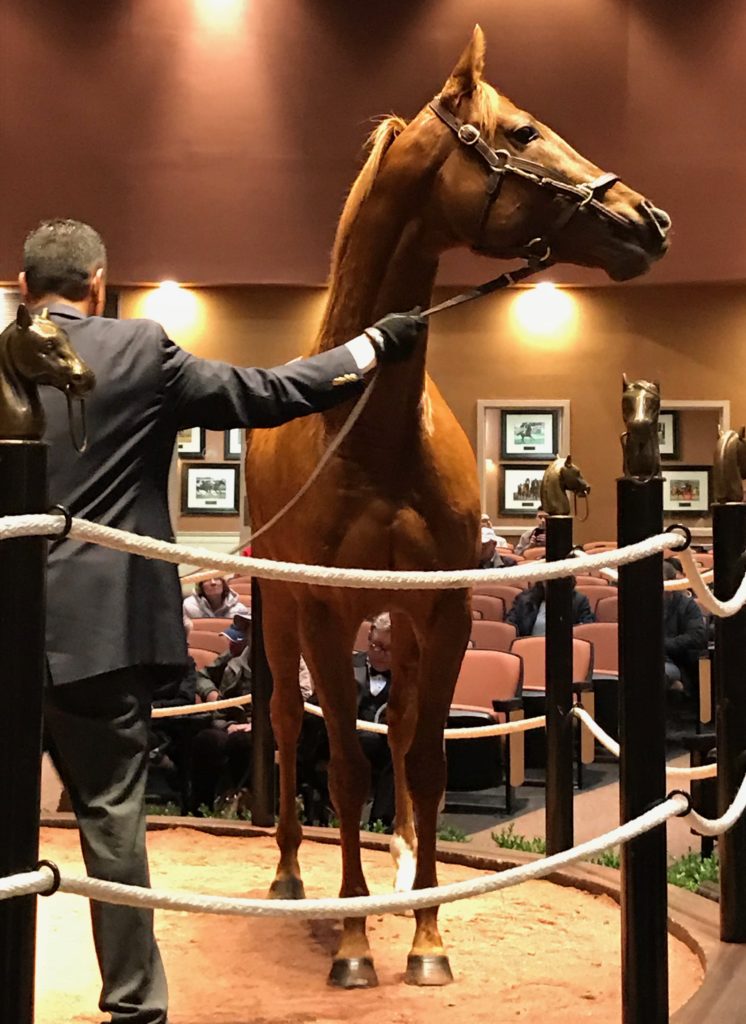
Despite offering Finest City as a weanling at Keeneland, Hank Nothhaft maintains that he has no regrets when it comes to selling her that day. He reflects on how the circumstances, timing, and luck culminated with her ending up with the right trainer at the right time to maximize her talent. Nothhaft believes that ending up in a small barn like Ian Kruljac’s was crucial to Finest City’s success because she received the individual attention that was required to work out her kinks and minor problems.
Before being sent to her new home in Japan, Finest City made a stop in England for a date with world-renowned sire Frankel. The resulting colt sold at auction for 108,000,000 -yen (around $1,000,000 USD) as a foal. She continues to reside at Northern Farm, where she delivered a colt by Lord Kanaloa in 2020.
.
Profitable, Transparent PA Breeding Partnership


HORSES OF RACING AGE HIGHLIGHT FASIG-TIPTON MID-ATLANTIC DECEMBER SALE
Article originally published in the Pennsylvania Horse Breeders’ Association January, 2020 Monthly Newsletter
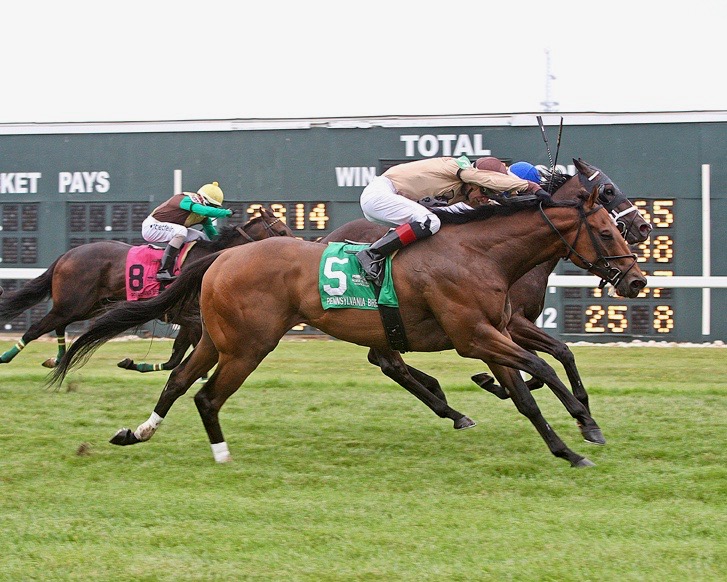
Five of the six top- priced PA-Breds sold at the Fasig-Tipton Mid-Alantic December Mixed and Horses of Racing Age held Dec. 10 at the sales pavilion in Timonium, Md., were horses of racing age.In all,44 PA-Breds sold for $703,900.
Stakes winner Fielder topped the offerings when Ron Paolucci Racing bid $100,000 for the gelded son of Sidney’s Candy. Consigned by agent Bill Reightler, Fielder campaigned for the majority of his 27-start career for Waldorf Racing Stables LLC, who purchased the gelding for $70,000 at the Fasig-Tipton Kentucky Horses of Racing age sale in July 2017.
Bred by Hank Nothhaft’s HnR Nothhaft Horseracing out of stakes- placed Karakorum Fugitive (by Ten Most Wanted), Fielder had been a $47,000 RNA as a weanling, and was sold as a yearling at the 2015 Keeneland September sale for $180,000 to Juddmonte Farms, who sent him to California to Bob Baffert. He made his career debut at Del Mar in a six and a half-furlong maiden special weight in November 2016, finished fifth, and was sold after that only start the following summer.
It took five months, and five attempts, for Fielder to break his maiden for his new owner, which came at Parx Racing. Trained by Marya K. Montoya, Fielder was a solid allowance horse sprinting on the main track, but became a stakes performer when put on the turf. In his grass debut, July 21, 2018, at Parx, he won the Marshall Jenney. Other stakes performances were two placings in the Laurel Dash in Maryland, both on the turf. In his five most recent starts he was second or third four times (including a second in the Laurel Dash beaten less than a length),and fourth in the Grade3 Turf Monster Stakes. With a career mark of eight wins, five seconds and six thirds, Fielder has amassed $351,225.
1
Passion Play by Lenny Shulman “Bloodhorse Magazine” 12 January 2019
Hank Nothhaft builds a top breeding program from scratch
BY LENNY SHULMAN
PHOTOS COURTESY OF HANK NOTHHAFT
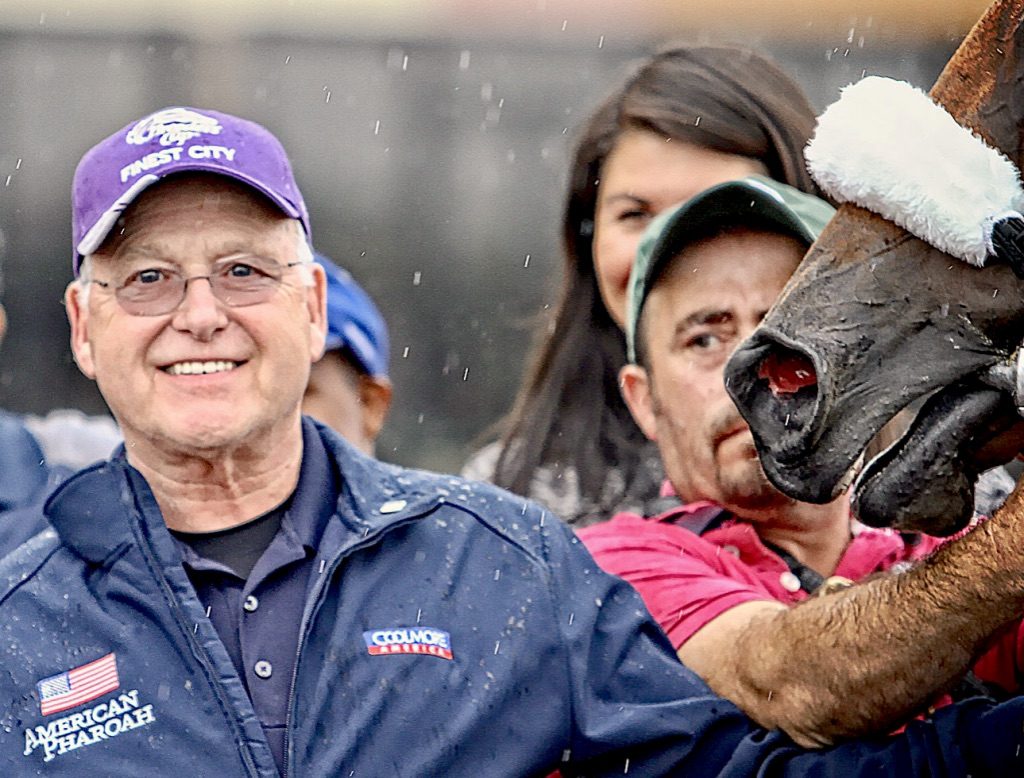
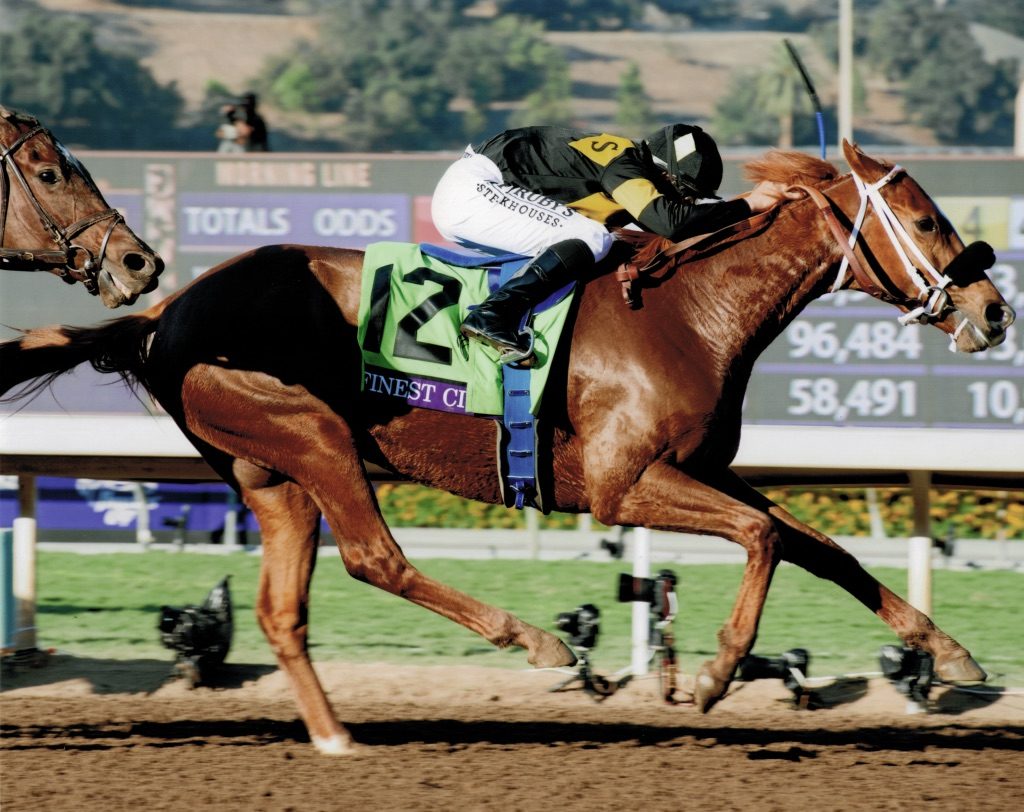
ELEVEN YEARS AGO VENTURE· TECHNOLOGY COMPANY CEO
Hank Nothhaft looked at himself in the mirror and realized that, after three decades, he was losing his passion for his work. He needed a new challenge, one that satisfied his all-encompassing, adrenaline-driven, compulsive lifestyle.
Hello Thoroughbred breeding and racing.
A decade of immersion into every thing horses has yielded significant results for the 74-year-old Nothhaft, a native of Pennsylvania who has traveled the world in both his military and civilian lives. Under HnR Nothhaft Horse Racing (the “R” coming courtesy of wife Randie) Nothhaft has bred Breeders’ Cup Champion Finest City, multiple graded stakes winner Daddy ls a Legend , and multiple stakes-winning homebred Grand Prix. He has also campaigned multiple graded stakes winner Living The Life and multiple grade 2-placed stakes winner Kindle, and has specialized in purchasing modestly priced stock that has gone on to perform on the racetrack and in the breeding shed.
There were no horses or racing in Nothhaft’s youth in Sharon, Pa ., between Erie and Youngstown, although today that area is littered with race tracks that didn’t exist decades ago. Nothhaft graduated from the United States Naval Academy and served in Vietnam , achieving his MBA in information systems technology after he exited the military. He assumed ownership of a series of tech companies, which

took him from Washington D.C., to Dallas, and eventually to Silicon Valley in Northern California. There, the racing bug bit him on friends-and-family outings to Bay Meadows.” We loved that place, and I developed a positive view of horse racing,” noted Nothhaft. “I was going back and forth to England quite a bit , and read all the Dick Francis novels on those trips, and began going to race tracks like Lingfield, near London, and really enjoyed it. ”
Those good feelings persuaded Nothhaft to take up the challenge of trying to survive in the horse industry, initially as an owner .
“I analyzed a bunch of different industries, and I ended up with Thorough-hred racing,” he said. ” I do look back and chuckle at my naivete in thinking I could do what has subsequently occurred. I love the competition and the immediate feedback you get on your decisions .
“What I find appealing is you can immerse yourself in the data side of it. I always had a dashboard on any company I was running and loved to throw myself into the statistics and analyze the company in as many ways as possible. So when l started looking at pedigrees and bloodlines, I thought, ‘Wow, that amount of data is perfect for an insatiable appetite like mine.’ ”
Nothhaft did his homework. He attended seminars put on by the Thoroughbred Owners of California, watched BloodHorse videos on conformation, read books, and then went out and raced some cheap claimers in Northern California, seeking to have fun, enjoy the competition, and hopefully break even. ‘The plan didn’t work well, and Nothhaft used the economic meltdown of 2009 to liquidate his stock, learn from his early mistakes, and start over again.
With the benefit of advice from Gary Mandella and Mary Knight, he began buying better Cal-breds. Chalking it up to “dumb luck,” he bought Randie’s Legend at auction for $ 43,000 in 2008 .
She would go on to produce Daddy ls a Legend. But Nothhaft turned the corner when he decided that Pennsylvania offered more opportunity than did the situation in California. He enlisted Carl McEntee to help buy bloodstock and the operation clicked. Nothhaft grabbed Kindle for $50,000, Be Envied for $37,000, Living The Life for less than $50,000, and Halljoy, who would become group stakes -placed. for $150,000 . All became valued members of his broodmare band, with Be Envied producing Finest City and Grand Prix.
“Hank came to realize that buying more-commercial broodmares was the most productive place to be, and safest to work within,” McEntee noted. “We’ve had good success and have made smart decisions on our breeding selections, which we both spend a lot of time on. ‘There’s luck involved, because this is the ‘Thoroughbred industry, and there are no certainties. But the harder you work, the luckier you seem to get.”
‘Today, Nothhaft’s 10 broodmares produce Pennsylvania-breds after being bred to Kentucky stallions, and he himself is on the board of the Pennsylvania Horse Breeders Association.
“One of the side benefits of getting into horses is that I’ve reconnected with my home state,” he said. “I’ve traveled the world, lived for three decades in California (today he lives in Austin, Texas) , and came back to my roots; in Pennsylvania. I’ve won the Presque Isle Downs Masters Stakes (G2) twice. Where other guys have Kentucky Derby fever, I want to get a PABRED to win the Masters,” which has never happened . It takes all kinds of people, right?”
Most of the mares Nothhaft owns today either raced for him or were bred by him, the notable exception being Sulis, whom he bought specifically to breed to Silver Train, a stallion Nothhaft bought and stood in Pennsylvania, hut who died after just two years. Having paid $105,000 for Sulis, a daughter of Maria ‘s Mon, Nothhaft proceeded to sell weanlings out of her for $250,000, $130,000, and $ 220,000 within four years.
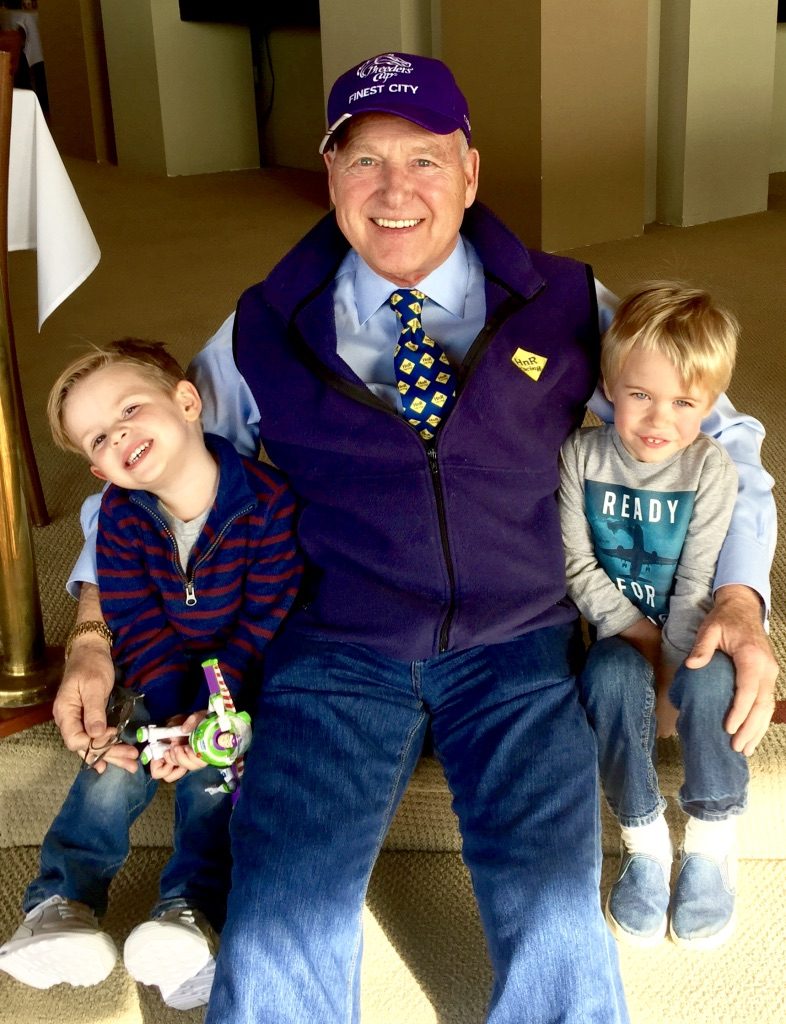

As legendary Kentucky horseman Robert Courtney used to say, that’s how you make money in this business.
Because the Pennsylvania incentive program is going well, Nothhaft said he might increase his mare population to 15, but generally he is concentrating on improving the quality of the band rather than increasing its number.
“Carl and I made a decision not to take the risk of raising them to be yearlings .” Nothhaft said of his early preference for selling weanlings . “At least until now. The yearling market is crazy right now so I’m not unhappy to hold onto them another year because the financial advantage is shifting that way. That hasn’t always been true.” That updated strategy comes in part from the American Pharoah-Kindle weanling colt Nothhaft sold for S400,000 who was pin hooked by Peter O’Callaghan and sold for s2.2 million at last September’s Keeneland yearling auction.
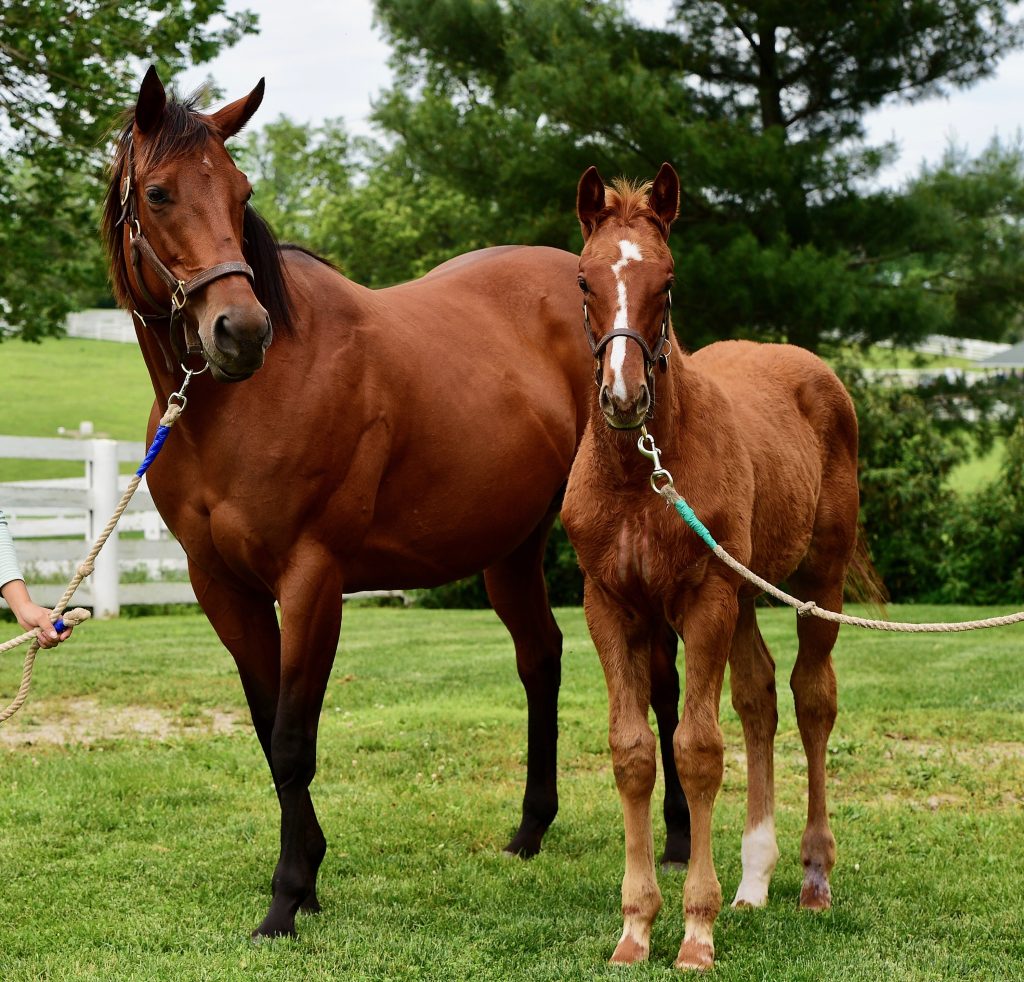
Nothhaft supported McEntee during the latter’s time at Darby Dan Farm and has helped bankroll McEntee’s move to open Ballysax Bloodstock, which now consigns the Nothhaft-breds.
“Carl is all energy and is a hard worker,” said Nothhaft. “In his first year in 2018 he’s had good-quality consignments and gotten good results.
“Hank is an incredibly passionate man who has to have something to d rive him and I’m the same way,” noted McEntee.”He’ll call me at 4 or 5 a.m. his time to talk. He knows only one speed, and that’s 100 mph .”
Nothhaft’s single most notable day in the business came on Nov. 5, 2016. when the Breeders Cup Filly & M are Sprint (G 1) was run at Santa Anita Park. The Nothhaft-owned Living The Life, who had won the Presque lsle Downs Masters in 2014 and 2015 and the All American Stakes (G3) in 2016. was slated to compete against the Nothhaft-hred Finest City, whom the breeder had sold as a weanling in 2012 for $50,000. ‘·My wife and l and other family members were planning to go from our home in Saratoga. Calif. Nothhaft stated. “Then a week before the race, Living the Life came up lame and had to be retired. I was so bummed out I had a knee-jerk reaction to give my tickets away. So we watched from home. I bet heavy on Finest City and when she won. there was an eruption . My phone started going crazy, so there was a lot of recognition of our connection to the horse. But l felt silly watching Gary Mandella accept our trophy.”
In the past, Nothhaft annually compiled what he now calls a “fantasy list ” of stallions for his mares, where he and McEntee would generate a roster of studs that fit his mares although they knew they wouldn’t he able to get to those stallions. Today, it is a different story.
“Now that I have better mares. we know we’re able to get to all the stallions on our list this year.” said Nothhaft. “So we’re not playing fantasy football anymore.” Nothhaft bought back a Pioneer of the Nile-Kindle weanling colt in November 2018 on a final bid of $375,000. He .also kept an American Pharoah-Halljoy yearling filly who RNA’d for $335.000. Those babies are indicative of the quality of stallions to whom he now sends his mares.
“This is a very faddish industry in my opinion,” he stated. “So going to American Pharoah in his first year-if you pick the right first-year stallion it can be a bonanza when you’re selling the progeny. Certainly American Pharoah was a good pick. So we do use some select first-year or young stallions, we call ‘Living the Dream stallions.’ They don’t have anything running yet, or at least won t before (the progeny) sell.
“As far as more proven stallions, we’re not generally going to the heavy hitters such as Tapit, Candy Ride, Into Mischief, and so on. When I was starting out, I bred to Tizbud. a full brother to Tiznow. Now, I love Tiznow, who is one of the less expensive studs I go to today, so that highlights where I started and where I’m at. But I’m also smart enough to know the minute you think you’ve got it all figured out, you’re actually really stupid because the gods are about to come down and chop your knees off. So I keep my feet on the ground.”
Said McEntee, “Hank is unlike most business people who come into the horse industry, where they tend to lose all of their previous business acumen. Hank has maintained the smart decision-making that got him to where he is.”
Nothhaft has worked diligently to try and help ensure that the Pennsylvania incentive program remains on sound footing, although that has proven to be a tricky enterprise in the past. ”Pennsylvania has had a great program for years,” said Nothhaft, “except that the state (government) kept coming up short on funds and taking money away from the breeding program for the general fund. As a breeder, you never knew what was going to be there going forward. What we’ve done is put the program in a trust; while that can still be broken, there is a significant penalty for the state if it decides to take funds away, so we feel more comfortable going forward.
“The number of foals is increasing in the state. There are new sires and brood mares showing up, and the quality of the talent you need is increasing. We know New York-bred and Cal-bred races are tough, but Pennsylvania isn’t a lay-up, either. But it does run between 400 and
500 races a year for state-breds, and if you have a decent horse, you can find a level at which to race and have a good chance of earning some money which is attractive.” ‘ The man on the street- which I consider myself- who doesn’t have 200 horses can realistically breed Pennsylvania-breds and sell or race them with the anticipation of a reasonable financial outcome. That’s the world I thought I was getting into way back at the start.”
A dose of naivete represent standard equipment for those seeking entrance to the Thoroughbred industry as a business proposition . And the addition of successful business people such as Hank Nothhaft to its ranks swells the legitimacy as well as the feasibility of this world of horses. He has embraced a challenge far too puzzling for most; entered on the ground floor and built a sturdy operation upward despite knowing nothing about its workings when he started. That horses can rekindle this sort of passion in a person of substance such as Nothhaft is a huge positive.
“l have been retired from the tech world for three or four years now, and I thank God every morning that l got involved in the horse business because it so satisfying,” he said. “It is extremely difficult, so when things do go right, the satisfaction and the adrenaline and the good feeling you get is so significant that it’s worth all the effort. “For a small guy like me, you have to work really hard to have something good going on, and when it does, it keeps you in a good mood for a while and you really have to inhale the happy fumes and the success . You have to ride over what I call th e Valley of Despair to keep your self going and motivated if you’re passionate about it.”■
HnR’s Small Broodmare Band Produces Big 2018 Results
Breeding Highlights 2018
Bred highest priced American Pharoah yearling sold at Auction & 2nd highest priced 2018 yearling by any sire at $2,200,000 o/o Kindle (Kindle 17)

Bred highest priced Tiznow weanling sold at Auction in 2018 $180,000 o/o Randie’s Legend (Randie’s Legend 18)
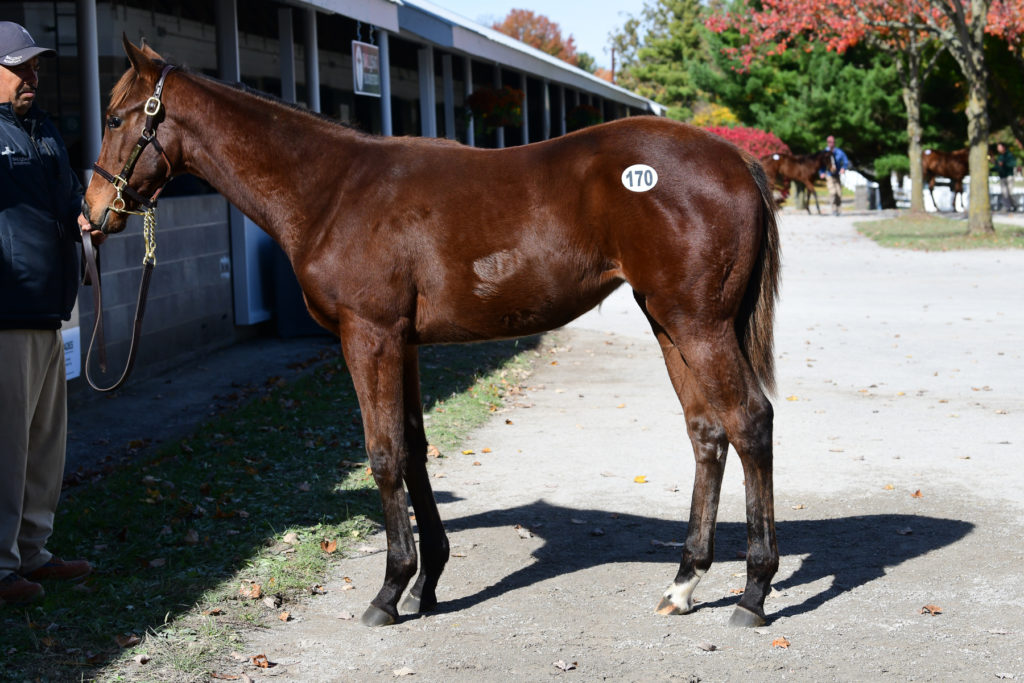
Bred and bought out foal share partner on Kindle 18 by Pioneer of the Nile for $375,000 at Keeneland November

Produced a handsome Pioneer of the Nile colt (KY) o/o Multiple Graded Stakes winner Living the Life (Living the Life 18)

Bloodhorse article on Kindle 17 12th most viewed story out of 5600 postings
Other 2018 HnR foals: Shoscombe Prince (PA) (C) by Bluegrass Cat o/o Fly Down Too (PA); Verrazano filly (KY) o/o Halljoy (Halljoy 17); Miss Roxy (PA) (F) by Noble Mission o/o Macaabra; Jump Start filly (PA) o/o Stormy Randie (Stormy Randie 18) and Bodemeister colt (PA) o/o ultra commercial mare Sulis (Sulis 18). Sulis 4 weanlings sold at auction total $670,000.
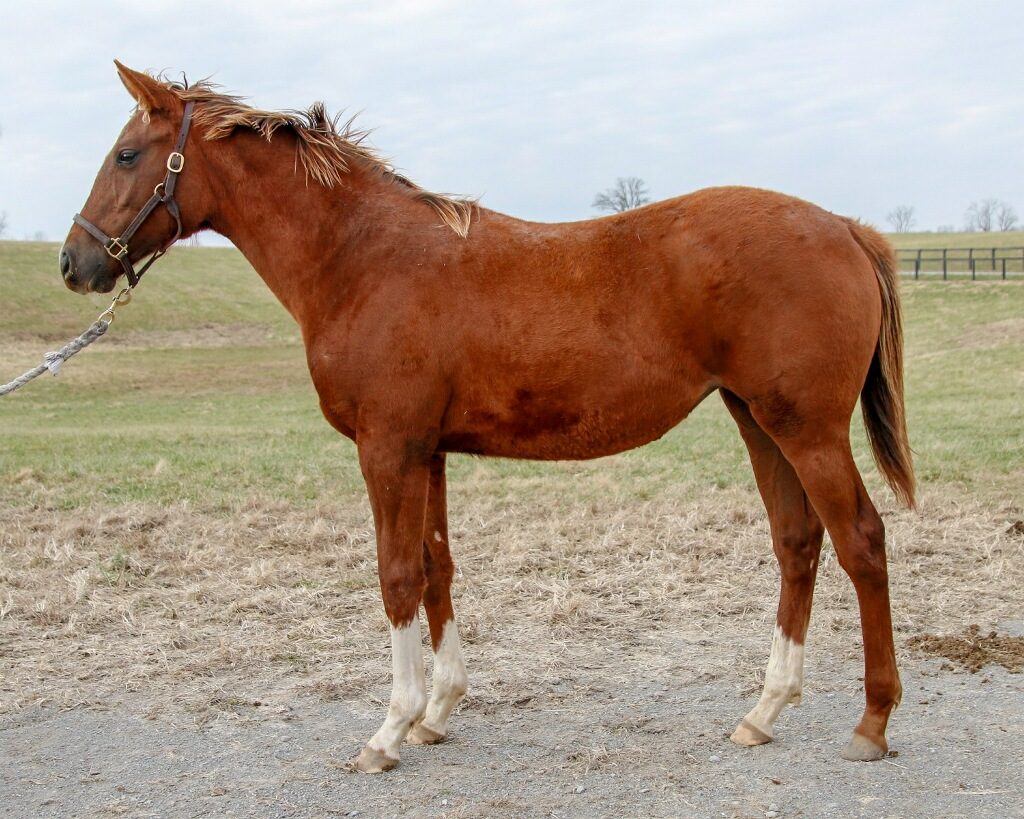
In addition to the commercial and weanling activity, HnR has a number of homebreds in the pipeline for racing in 2019.
Courageous Lynne by El Padrino o/o Stormy Randie is currently racing for Bernie Houghton.
Made in America (KY) by Tiznow o/o Kindle. Injured as a two year old, he is in early stages of training for debut in 2019 for Ben Colebrook at Keeneland.
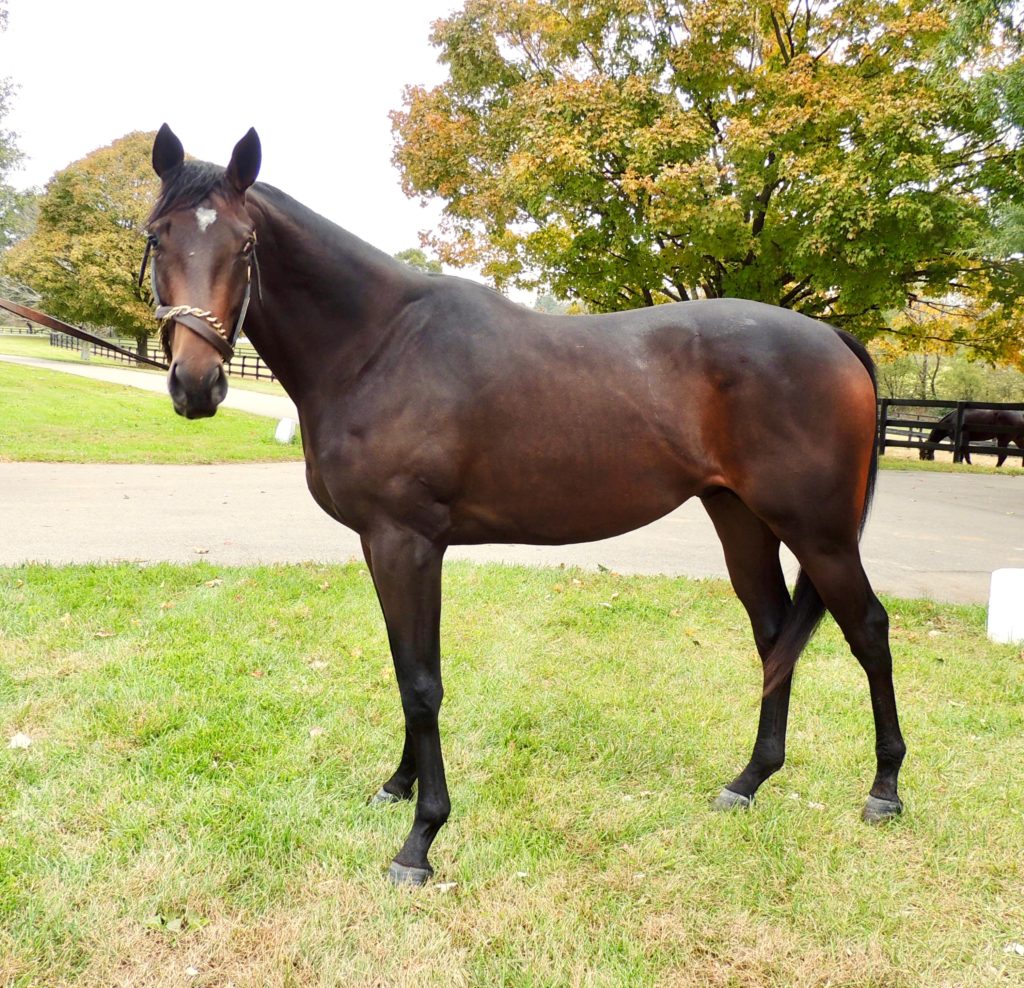
Sunny Holly(CA) filly by Shackleford o/o Fly Down Too should make her 2nd start as a three year old in January 2019 for Bernie Houghton at Penn National.
Noble Flight (PA) by Jump Start o/o Stormy Randie. She overcame a minor back injury and will return to training soon with the goal of racing as a 3 year old in 2019 for Bernie Houghton.
Belleau Wood (PA)colt by City Zip o/o Randie’s Legend in training at Payson Park FL. Looks like he will probably be and early two year old. No trainer determined. Looking to base at PARX. Virginia certified.
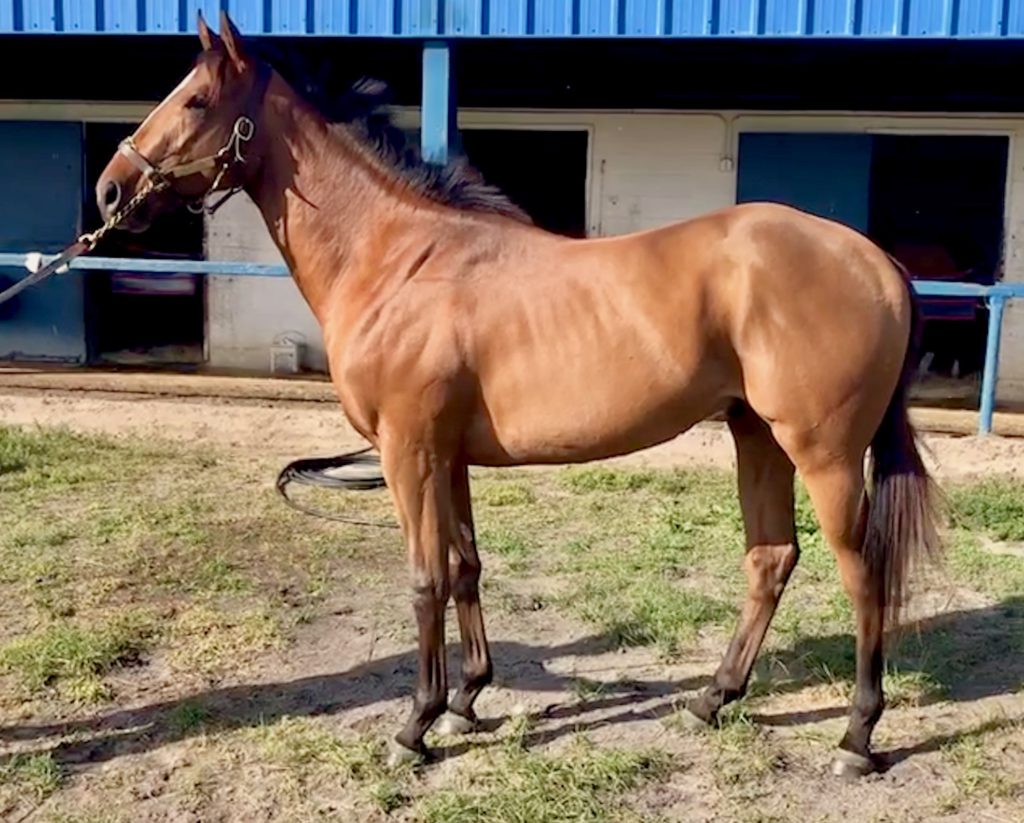
Envied (KY) filly by American Pharoah o/o Halljoy. A $335,000 RNA at Keeneland September, HnR decided to keep and race. She has been in training at Miacomet Farm and is targeted as an early two year old for Ben Colebrook at Keeneland. Virginia certified.
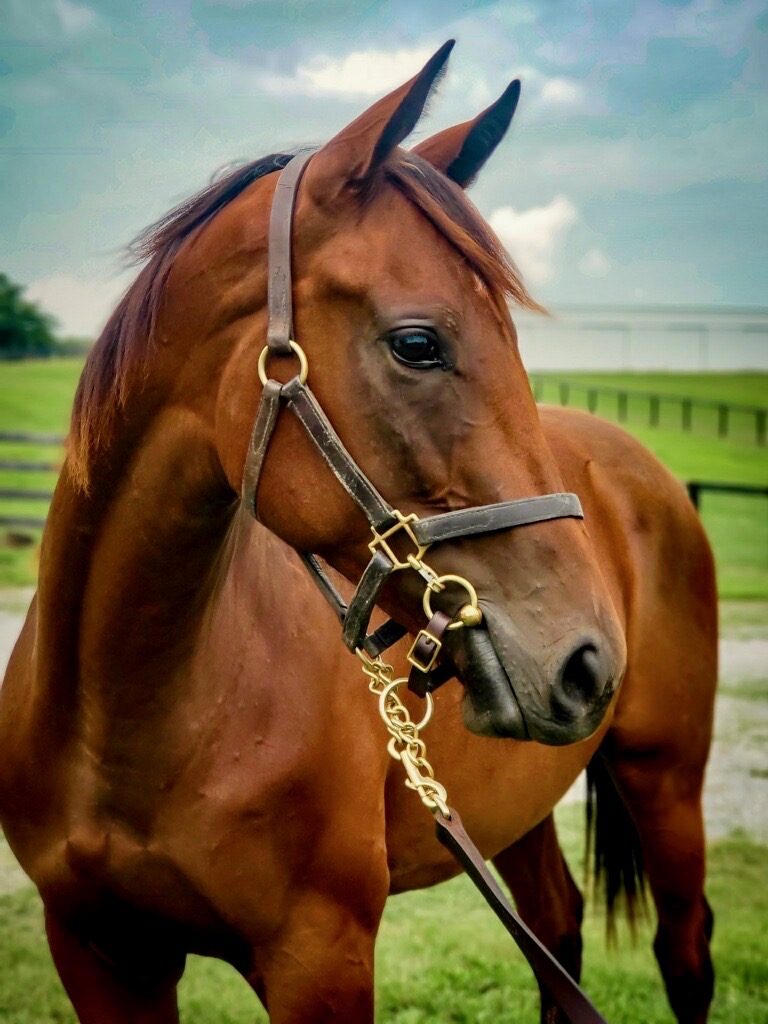
Former Marine (PA) colt by El Padrino o/o Stormy Randie is in training at Eagle Point Farm. He will be turned out soon, resume training in a couple of months and then make his move forward as a 2 year old colt in 2019. Virginia Certified.
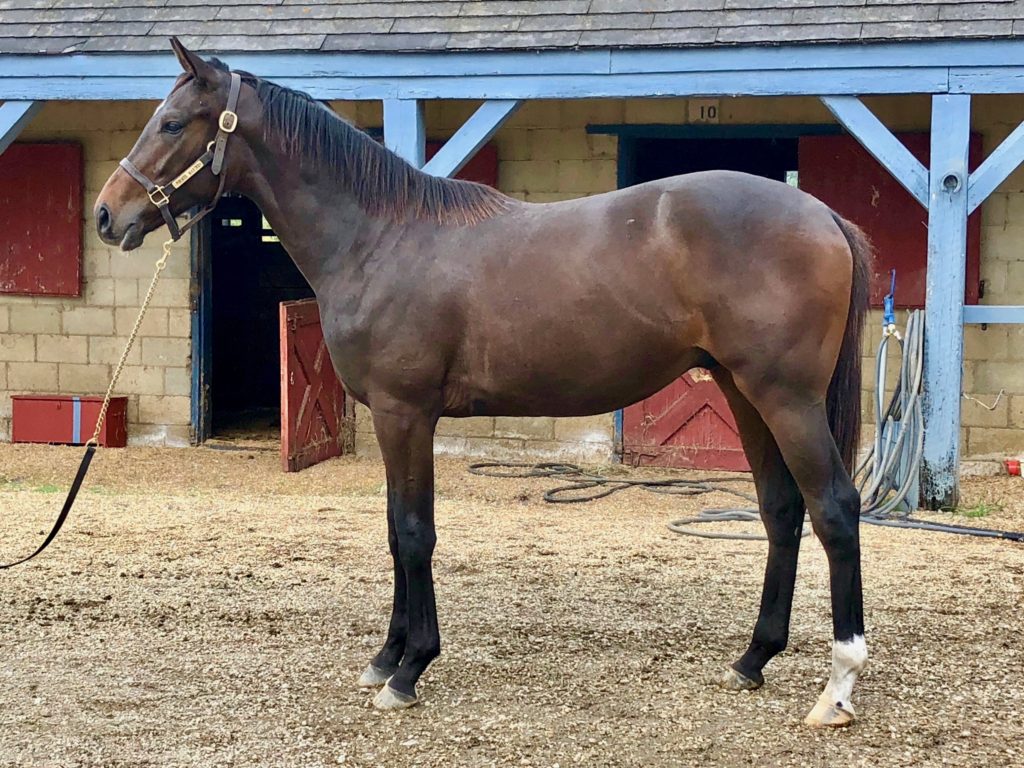
Lithographer (CA) colt by Papa Clem o/o Fly Down Too in training at Eagle Point Farm. Same program as Former Marine. Virginia Certified.
Great Again (CA) colt by Champ Pegasus o/o Gracious Girl. Same as above. Virginia Certified.
Snapshot HnR Bred Racers (2018 only)
Daddy is a Legend (PA) Winner Lake George’s Stakes Grade 3 and 2nd Matriarch Grade 1 7 races 1 win 1 place 2 show $217,500\
Fielder (PA) Winner Marshal Jenny Stakes 11 races 5 wins 1 place 3 show Earnings $219,909
Fielder (PA) by Sidney’s Candy o/o o/o Karakorum Fugitive
Roll on Big Mama (PA) 12 races 2 wins 2 place 2 show $95,456
Regal Anticipation (PA) by Great Notion o/o Double Your Luck
Regal Anticipation (PA) 9 races 3 wins 4 places 2 show $58,293. Other winners This is how we roll (PA) and Courageous Lynne (PA).
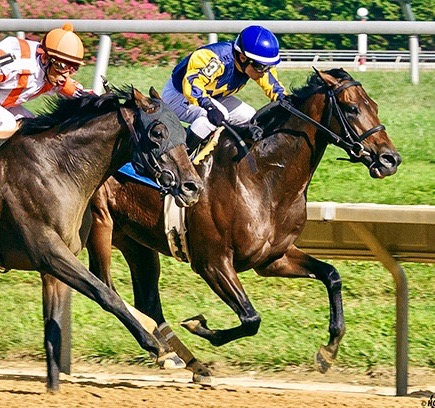
HnR has now bred 5 Stakes winners: Finest City (PA) Breeders Cup Champion, Eclipse Award, PABRED Horse of the Year, Multiple Graded Stakes, Millionaire; Daddy is a Legend (PA) Multiple Graded Stakes Winner, TDN Rising Star, Grade 1 Placed; Grand Prix (PA) Multiple Stakes Winner; Mister Nofty (PA) and Fielder (PA). All of these stakes winners are PABRED’s.

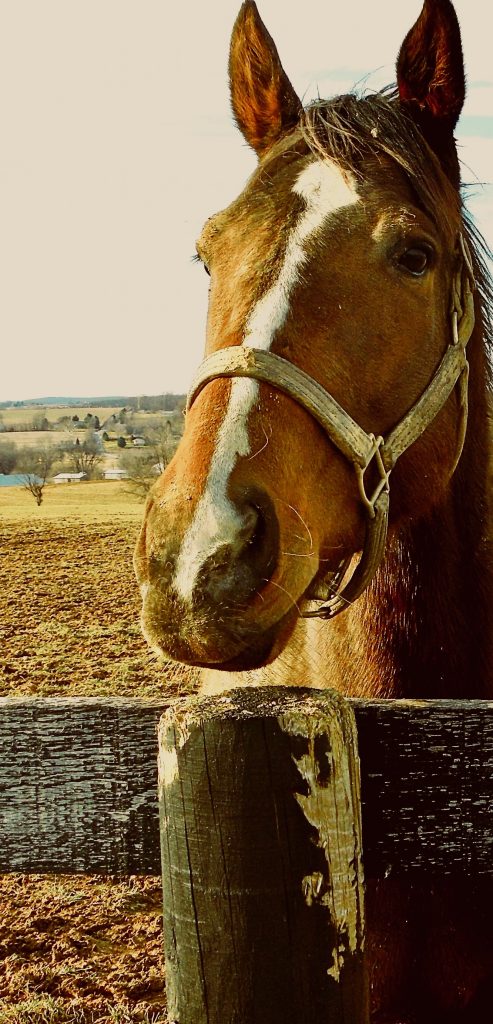
HnR’s (HnR Nothhaft Horse Racing) now consists of eleven broodmares. Homebred Multiple Stakes Winner Grand Prix (PA) by Tale of the Cat o/o Be Envied, 1/2 to Finest City is the latest addition after retiring sound in December 2018.
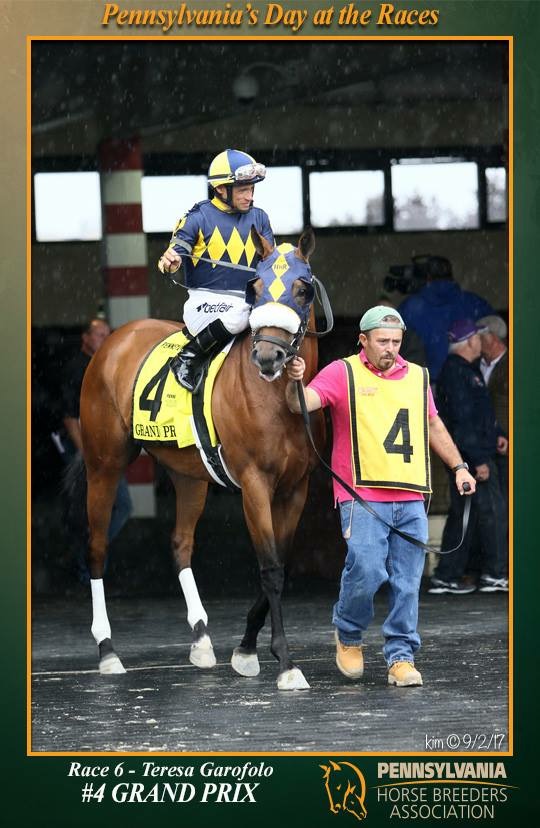
She joins other recent, young HnR homebreds Oh No by Pioneer of the Nile o/o Walking Path 1/2 to Mister Nofty and Move by Silver Train o/o Be Envied 1/2 to Finest City and Grand Prix, who were bred in 2018 and will produce first foals in 2019. Both these mares are PABRED’s.

HnR’s Broodmare Band All HnR mares came through the HnR racing program and/or are homebreds.
NAME 2018 SIRE 2019 SIRE CHOICE
Fly Down Too (PA) Shackleford* Always Dreaming
Grand Prix (PA) NA Mendelssohn
Halljoy (IRE) Connect * Mendelssohn
Kindle (KY) NA Into Mischief
Living the Life (IRE) Tapit Justify

Macaabra (IRE) Looking at Lucky* Practical Joke
Move (PA) Verrazano* Cairo Prince
Oh No (PA) Cupid* Jump Start
Randie’s Legend (CA) Candy Ride* Justify
Stormy Randie (KY) Jump Start* Speightster
Sulis (KY) NA Practical Joke
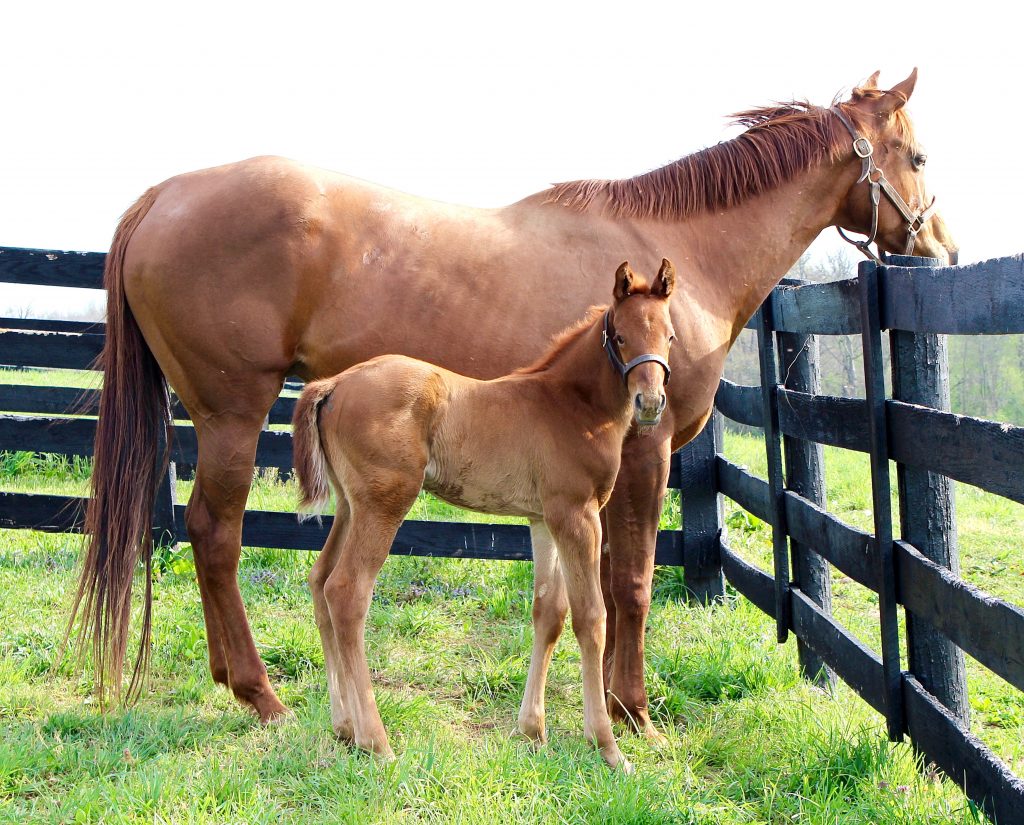
*Planned PABRED
Stormy Randie
Nothhaft finds thrills in the Thoroughbred Industry
INTERVIEW Bloodhorse Daily “MarketWatch”
Sept 28, 2018
By Meredith Daugherty
twitter @BH_MDaugherty
Ten years ago, Hank Nothhaft founded HnR Nothhaft
Horse Racing and dove into the world of
Thoroughbred breeding, racing, and sales. Blood-
Horse MarketWatch spoke with Nothhaft about what
sales mean for his operation, how the state of the market
affects breeders, and what the industry can do to
help ensure continued success at all levels.
MarketWatch: How did you get your start in the
industry?
Hank Nothhaft: After graduating from the (U.S.)
Naval Academy and serving in the Marine Corps, I
became a startup technology executive. I ended up
as the CEO of five venture-backed, high-tech-based
startups in the telecommunications business. It’s a
high growth environment; I call it adrenaline-driven.
Looking over the horizon and going from being
the young bull to the old bull, I realized that even if
I wanted to go on forever, I had to be realistic. So I
systematically decided to start a business that would be
a viable alternative to being a CEO that I could run in
retirement and have a lot of fun with. To have the same
sort of thrills I experienced in the business world. So
in 2007-08, I stuck my toe in the water of the industry
and have proceeded from there via the school of hard
knocks, trying not to make the same mistake twice.
We’ve had a lot of tumult in a short period of time
because of the significant financial recession that
occurred in 2008. I got started just before that, and
I had made some calculations that turned out to be
not very accurate, but because I was a financial expert
when the collapse occurred, I took advantage of that
situation to do what I call a “restart round” and push
aside the things I had done incorrectly to try and have
a more successful path. I certainly had the satisfaction
of enough good things happening that my adrenaline
addiction has been satisfied.
MW: Were you familiar with the industry at all
when you made your transition?
HN: I had no direct connection with the horse
racing industry whatsoever when I started, but I get up
most mornings very thankful that I made that fateful
decision to get involved. My wife and I were very casual
fans, so that was certainly part of it. The other part was, I
went to Europe frequently and I was addicted to reading
Dick Francis novels, and I would carve a day out here or
there to go to tracks within easy rail distance from London.
I had a romanticized view of the British horse racing
industry, but as silly as that sounds, it
did play a part in my decision.

The American Pharoah colt consigned as Hip 91 at the
Keeneland September Yearling Sale
MW: Ten years after forming HnR NothhaftRacing, how did you feel
about watching the American Pharoah—Kindle colt that you sold
as a weanling for $400,000 sell for $2.2 million as Hip 91 at this year’s
Keeneland September Yearling Sale.
HN: It was a great time. I derive a lot of satisfaction from those
moments, and it doesn’t have to be a big monetary achievement. I think
the sale was fantastic. I think it was like a Hollywood script that we had
the first yearlings from a Triple Crown winner, and we
had Sheikh Mohammed there for the first time in 10
years. We also had the Coolmore/Godolphin détente in
place and a phenomenal stock market going, a new tax
bill, new players in the industry, a global marketplace …
what could be better than that? The results of the sale
are unequivocally outstanding.
MW: What was special about that colt that you
remember from your time with him?
HN: I paid $50,000 for his dam, Kindle. I had a
tremendous relationship with the horse, spent a lot of
time with her when she was racing, and she was our
first stakes winner. She has the greatest disposition.
The reason I was able to buy her was that she was a
bit short. I moved her to Kentucky because regional
sires are not really commercial, but I breed all my
Pennsylvania mares in Kentucky, and they’re all foaled
out in Pennsylvania.
With Kindle, and a handful of really commercial
mares, I’ve been producing Kentucky-breds, but
mostly I have Pennsylvania-breds. No one knew with
her what kind of foal she’d produce, but she’s a robust
mare. With American Pharoah, I was lucky to have a
couple mares that were good enough to be accepted, so
I bred Kindle to him. From the get-go, she produced
an exceptional foal. Almost perfect. He’s the proudest looking,
most balanced horse, and I love the streak of
lightning blaze on his face. He was the prime candidate
to sell as a weanling. My reserve was $400,000, and it was exactly on
the nose.
I’m so excited for the horse, because I’ve heard rumors that they’ll
ship him to the United Kingdom. Assuming that’s the case, the top
folks in the Sheikh’s operation will get a good look at him and then
put him in a position somewhere in the world to be as successful as
possible. My great hope would be that he works out as a dirt horse and
that maybe he could be the Sheikh’s Kentucky Derby (G1) horse.
The one thing I realized by selling horses is that they
end up in better hands than mine. People with better
contacts, more money, and better resources than my
own. There couldn’t be anyone that meets that criteria
better than Sheikh Mohammed. When you sell them,
you set in motion a chain of events that could never
have occurred had you retained ownership yourself.
I bred Kindle to Pioneer of the Nile, and I have this
phenomenal Pioneer of the Nile colt. He’ll be in Book
1 of the Keeneland November Breeding Stock Sale.
I also had Hip 1 in the (September) sale. She was an
RNA, so I have entered her in the Fasig-Tipton October
Yearling Sale (as Hip 624). I want to try to capitalize
on the current market demand for quality American
Pharoah bloodstock. I am confident that given a better
position, she will be a standout in this sale. If not, we
are certainly prepared to keep and race her, as she is a lovely filly.
“When you sell them you set in motion a chain of
events that could never have occurred had you
retained ownership yourself.”
—HANK NOTHHAFT
MW: From a breeder’s perspective, what did you
think about the Keeneland September sale and the
quality of the yearlings being offered?
HN: In terms of the sale’s success being a mark
of our industry turning the corner from the market
downturn, the thing that I really look at as a breeder
is, how many horses are being bred? The last numbers
that were available are not super encouraging. We kind
of flattened out more or less three or four years ago,
and we haven’t really turned the corner. Kentucky has
gotten back to where they were 20 years ago, but if
you look at what percentage of horses that represents,
they’ve gone from being 35% of the horses bred in the
industry to somewhere around 55%. That means, likely,
if you look at each state, all the other states have had
significant declines.
I look at those bigger states that have had a tradition
in the horse racing business, and some of them are
at a third of where they were, some have all but
disappeared. So coming out of the sale, I think the thing
is that the industry will have really turned when the
horse population responds or we reduce the amount of
racing that is taking place, because there aren’t enough
horses to feed the engine we currently have.
I think you have to look at the sales and look at the
later books and see how many horses are being sold at
a loss. You have to ask yourself, “Why and how could
this sustain itself if there are people who are breeding
and losing money?” And they can’t continue to do that
indefinitely. I think one of the bright spots can be state
incentive programs like in Pennsylvania, where I’m
involved. You can breed a reasonably competitive horse
there, keep it, race it, and make money and have fun,
or take it to a sale and maybe it sells at a loss, but if
the owners race it, then you can actually break even or
make a profit.
What’s kept me happy and in the game is that I’m
treating this like a startup. I’ve been bootstrapping and
reinvesting what I have back into the business to grow
it, and one of the big things that has helped me do that
is the state incentive program. Relative to my needs,
it’s generated a lot of cash that’s helped keep me in
the game. I can tell you without breeders, there is no
industry. Period.
If the industry wants to maintain the broad racing
schedule they have, they’re going to have to inevitably
produce more horses. Eventually, it has to be profitable,
or at least help people break even, for breeders and
enthusiasts to get into the game. I do know a lot of
people took mares out of service in smaller states, so we
need those to come back in.
MW: Do you think the market can continue the
trajectory it has taken this year?
HN: There are hard-core, central players in the
Thoroughbred industry, and those non-newcomers
are not that affected by the stock market and non discretionary
income. They are to a certain extent, but I
think the U.S. economy is in a sweet spot, and the only
thing that could upset the apple cart in my mind would
be the federal reserve increasing interest rates too
fast and somehow cutting off this really perfect scenario
we’re seeing in the economy.
My view right now is that we’re solid in the U.S.
I think other countries will adopt more pro-growth
strategies (for) their economies, and that will provide
even more underpinning to the industry. The other
side of the coin, however, is that with breeders, some
other countries have the same problem I proposed that
we have. I think they’re thinking, for example in the
U.K., of putting together a type of incentive program.
Hopefully, breeding numbers start reflecting that
programs are working here in the states.
The top end and the middle market are much higher
than they were. People have got to bid higher for horses
than they would have had to previously. I think what is
true is that people had to bid more money because you
have more money chasing the same number of horses.
The thrill of owning a horse and being involved in the
industry is fantastic. If people were more exposed to it,
many people would want to do it. BH
Regrouping year is latest good one for Nothhaft
By Emily Shields
Originally published “PHBA September 2018 Newsletter

“Horse racing has taken me some places that I certainly would have never imagined,” said Hank Nothhaft. It rings as an ultimate understatement.
The longtime business tycoon only got into the sport as a means to an end, pursuing racing when he realized he wouldn’t be able to continue his success in the corporate world forever. “As you get older, you think about the next chapter,” he said. “The people working for me were younger and younger, I guess because I got older. Towards the end of my career it was a 40-year dichotomy between the average workforce and myself. It’s such a high energy game that I realized I couldn’t do it forever, even if I wanted to.”
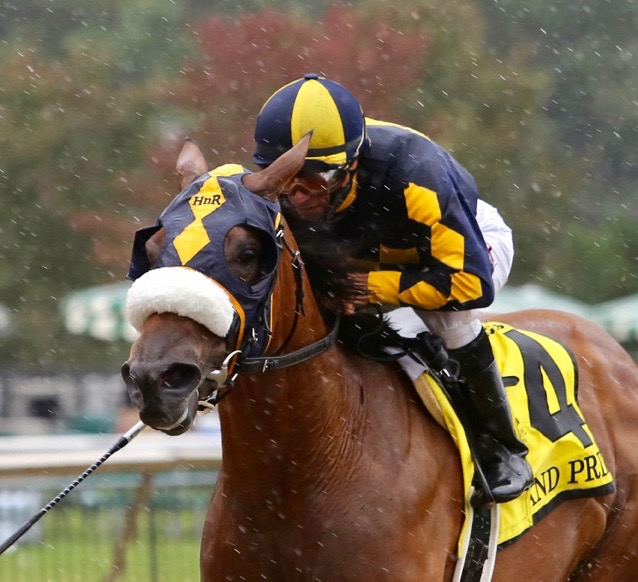
Nothhaft feared what would happen if he was suddenly forced to retire via company acquisition, and have nothing to do. “I very consciously decided I needed to get something going on the side, something as satisfying as being a CEO to high growth companies, handling hundreds of millions of dollars. It’s an adrenaline junkie life; I needed something like that.”
Nothing spurs excitement more than horse racing, which can be a fast-paced numbers game. “It would fill my need for analytics, data, and the adrenaline rush, and I could do more with less than the other guys who had more money,” Nothhaft said. But his first attempt – running horses in Northern California – didn’t succeed.
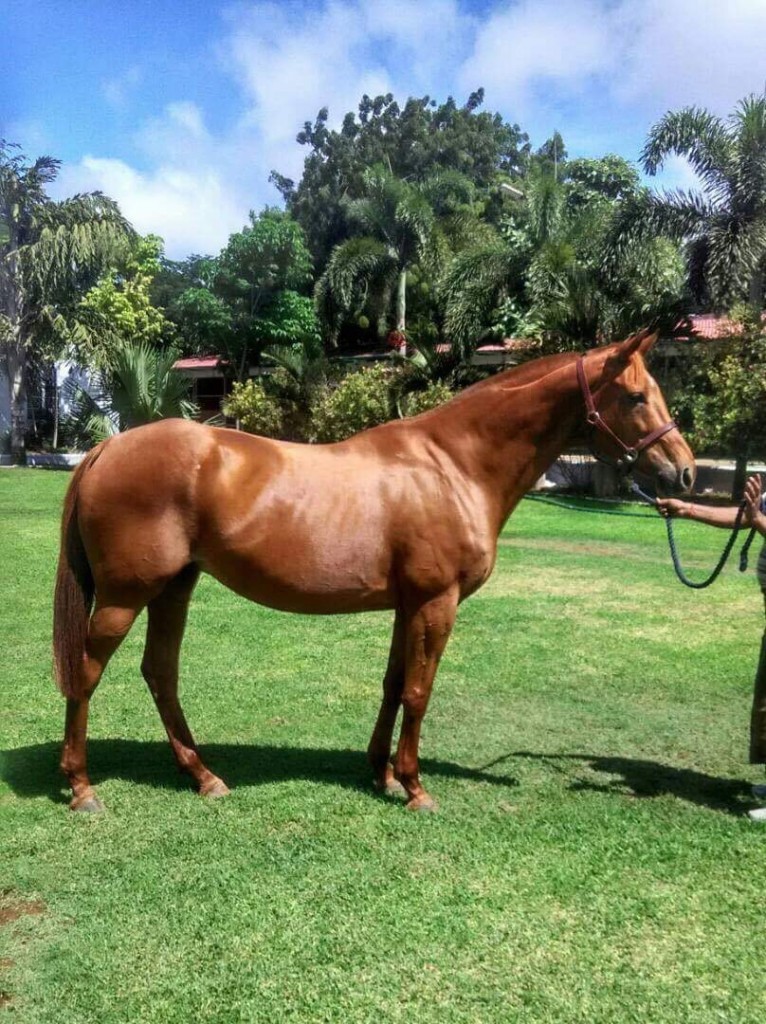
The economic crisis in 2008, “crushed all the discretionary money endeavors,” and Nothhaft realized he needed to change his business model. “I hadn’t gotten involved with the right people. It became clear that there was no viable business opportunity running claiming races in Northern California. I got aggressive and unloaded all the horses I had; I ended up with two horses that I couldn’t place successfully.”
One of those two was Randie’s Legend, a Benchmark half-sister to stakes winners Eternal Rule and Frumious. “That’s turned out to be a great story,” Nothhaft said, but another great story unfolded first.
“I realized I needed to find more attractive financial footing if I was going to make a go of it,” Nothhaft said. He met Carl McIntee, who lured him out to Pennsylvania several times before Nothhaft decided the state breeder incentives were exactly what he wanted. He purchased the mare Be Envied in foal to City Zip and became the breeder of record for Pennsylvania-bred Finest City. Nothhaft sold the “quirky” filly for $50,000; she ended up in the barn of young trainer Ian Kruljac.
“I’m absolutely convinced if she had gone into a big stable she would have been lost in the shuffle,” Nothhaft said. “With the idiosyncrasies of her personality and the minor physical difficulties she overcame, it was a blessing that she ended up where she was.” That’s why Nothhaft has no residual regret about Finest City going on to earn $1,266,394 and winning the 2016 Breeders’ Cup Filly and Mare Sprint-G1.
And he still has something from the family, being the owner of stakes winner Grand Prix. The four-time winning Pennsylvania-bred was injured earlier this year, but is back in training at Keeneland with Ben Colebrook. “She’s got dirt and Tapeta to train on there,” Nothhaft said. Another half sibling, the winning Silver Train mare Move, was bred to Verrazano this year.
The predominant reason that Grand Prix hasn’t been retired is because Nothhaft considers it a life goal to win the Presque Isle Masters-G2 with a homebred. He’s already won it twice with Living The Life (Ire), who scored in 2014 and 2015. She missed by a head in 2016. “People want to win the Breeders’ Cup, etc., but my realistic goal is to win the Masters with a Pennsylvania-bred. I’m hoping that will be Grand Prix.”
With so many horses on the sidelines or back in training, Nothhaft notes that this is a “regrouping” year for him, but one horse he bred is tearing up the turf. Randie’s Legend, one of the mares he couldn’t sell when leaving California, produced a Scat Daddy filly in 2015. The Pennsylvania-bred Daddy Is a Legend was sold for $140,000 as a weanling, and now races for Jim and Susan Hill and trainer George Weaver.
She won the Jimmy Durante Stakes-G3 at Del Mar as a juvenile, and added the Lake George-G3 at Saratoga on July 20.
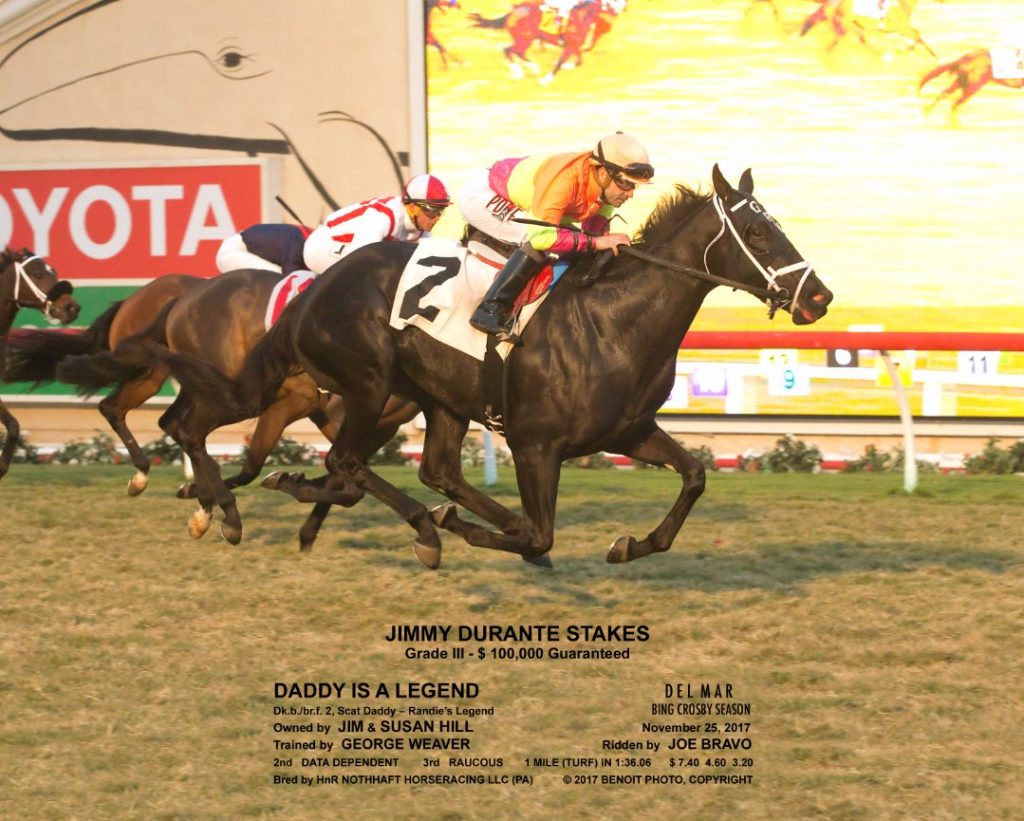
In between, Daddy Is a Legend was fourth in graded stakes races at Keeneland and Belmont, and third on the Kentucky Oaks undercard at Churchill Downs. That race, the Edgewood Stakes-G3, was run in a driving rain where Daddy Is a Legend missed the victory by a half-length behind Toinette and Breeders’ Cup winner Rushing Fall. She once again followed Rushing Fall home in her most recent effort, when third in Saratoga’s Grade 2 Lake Placid on Aug. 18.
“The fickleness of horse health is so fleeting,” Nothhaft said. “I had to be prudent and sell some of my horses, otherwise you’re not putting a lot of money back. I’m obviously tickled pink that Daddy Is a Legend got into such fantastic hands. She has proven the commerciality of Randie’s Legend and rewarded my loyalty to her.”
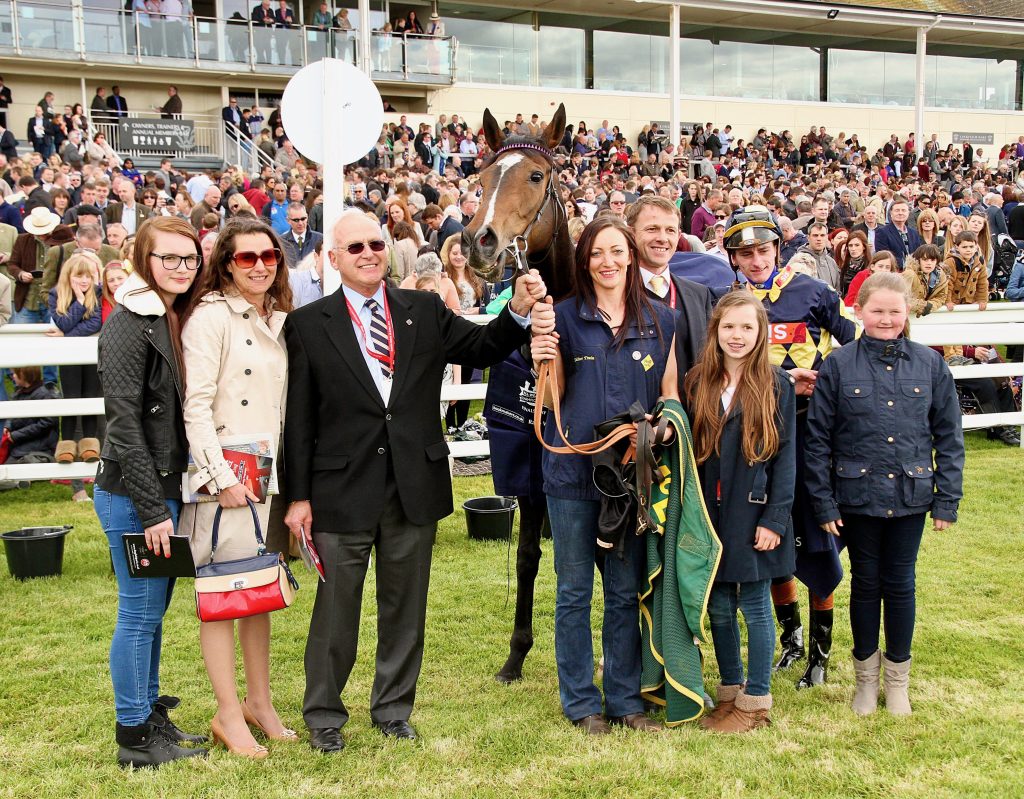
Hank Nothhaft purchased future star, Living The Life (Ire), in England in 2014
Randie’s Legend has a City Zip yearling colt and a Tiznow weanling filly, both of which Nothhaft still owns. The mare has been bred back to Candy Ride (Arg) for 2019.
“Pennsylvania has been really good to me,” he said. “I’ve figured out how to have success here whether I own them or sell them to others. It’s a fantastic program.” Fielder, who Nothhaft bred but is racing for Waldorf Racing Stables LLC, won the Marshall Jenney Stakes at Parx on July 21. He finished second in an allowance race against open company at Laurel Park three weeks later.
Nothhaft, who recently broke an ankle and tore his meniscus in a stairwell accident, will be out of action for a while but has plenty to keep his mind occupied. “I have 10 brood- mares, roughly 15 horses on their way to the track, and six or seven in training. Right now, I don’t have any horses that I own that I didn’t breed. They’re all homebreds. I’m not in any partnerships with anybody. I’m striving for quality, not quantity. This whole sport has kept me grounded and headed in a positive direction.”
HnR’s Kindle American Pharoah colt Lights Up Bid Board at $2.2 Million
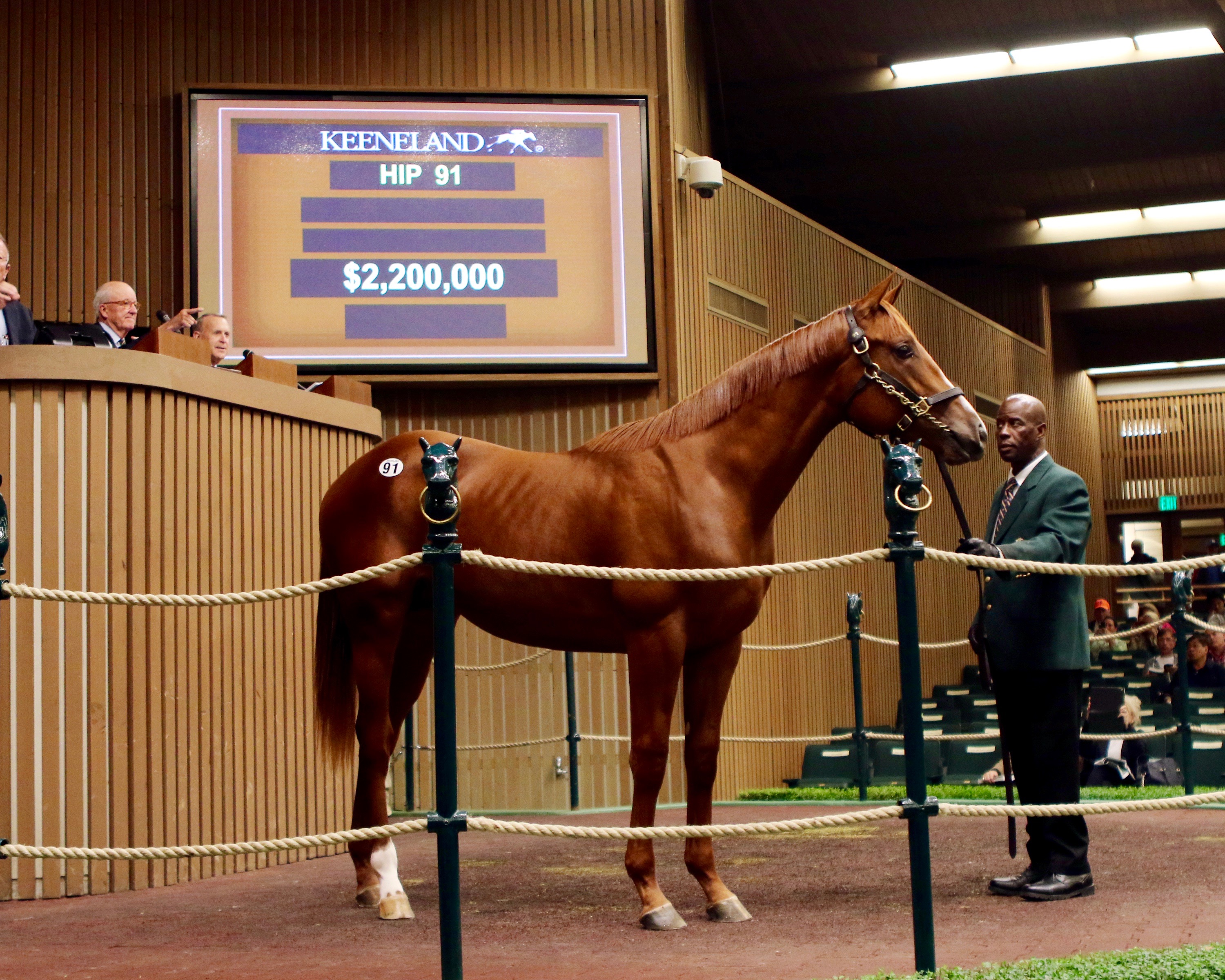
|
Photo Courtesy Keeneland |
Hip 91, an American Pharoah colt, sold for $2.2 million at the Keeneland September Yearling Sale Sept. 10
Colt bought as weanling for $400,000 new saletopper.
By Ron Mitchell
September 10, 2018
| Originally Published “Bloodhorse Magazine” |
Sheikh Mohammed’s Godolphin continued its buying spree at the Keeneland September Yearling Sale when it went to $2.2 million to purchase a colt from the first
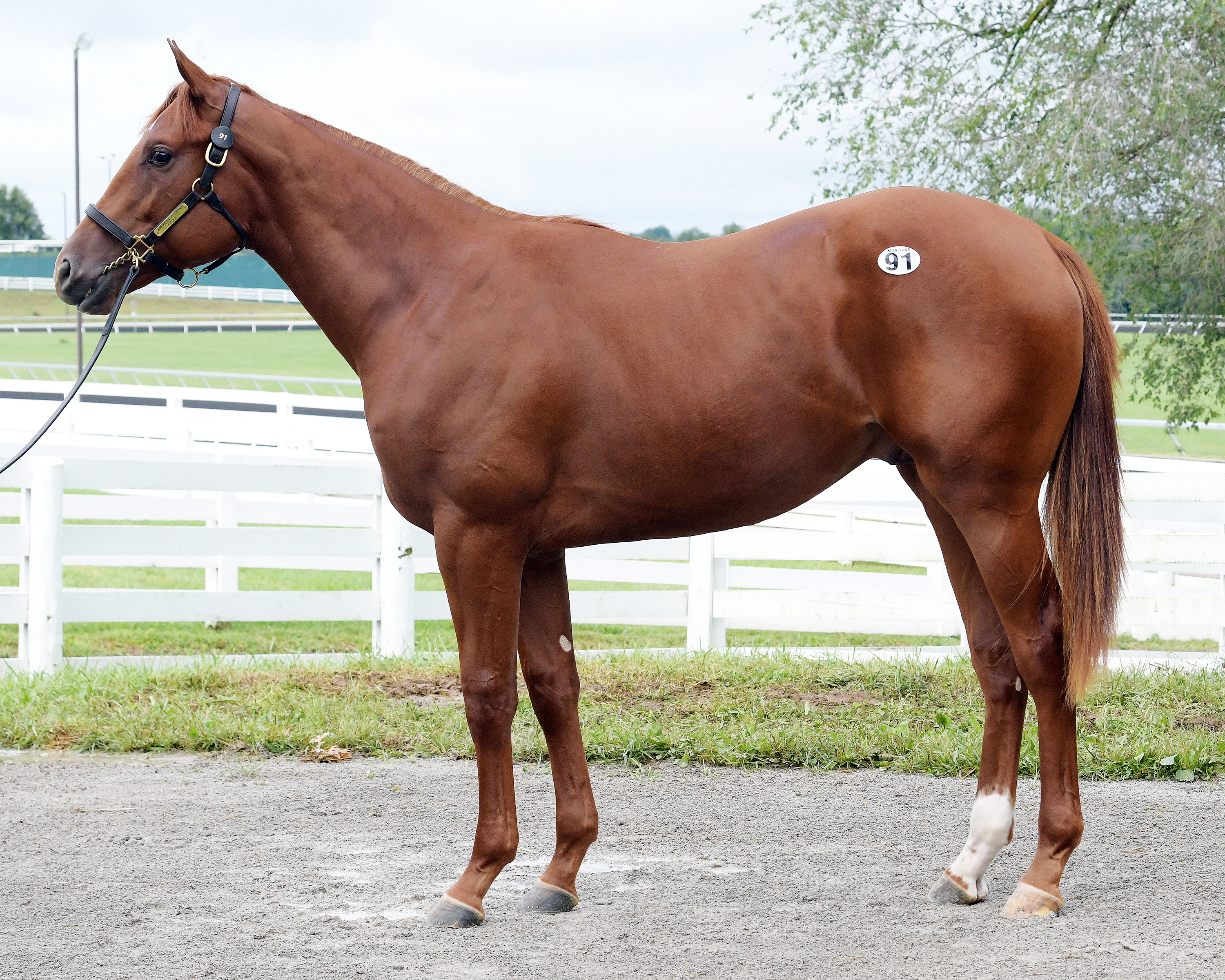
crop of Triple Crown winner American Pharoah .
The colt, consigned as Hip 91 by Peter O’Callaghan’s Woods Edge Farm, is the second foal out of the multiple stakes-winning Indian Charlie mare Kindle.
Bred in Kentucky by HnR Nothhaft Horseracing, the colt had been purchased by O’Callaghan’s Cavalier Bloodstock for $400,000 as a weanling at last year’s Keeneland November Breeding Stock Sale.
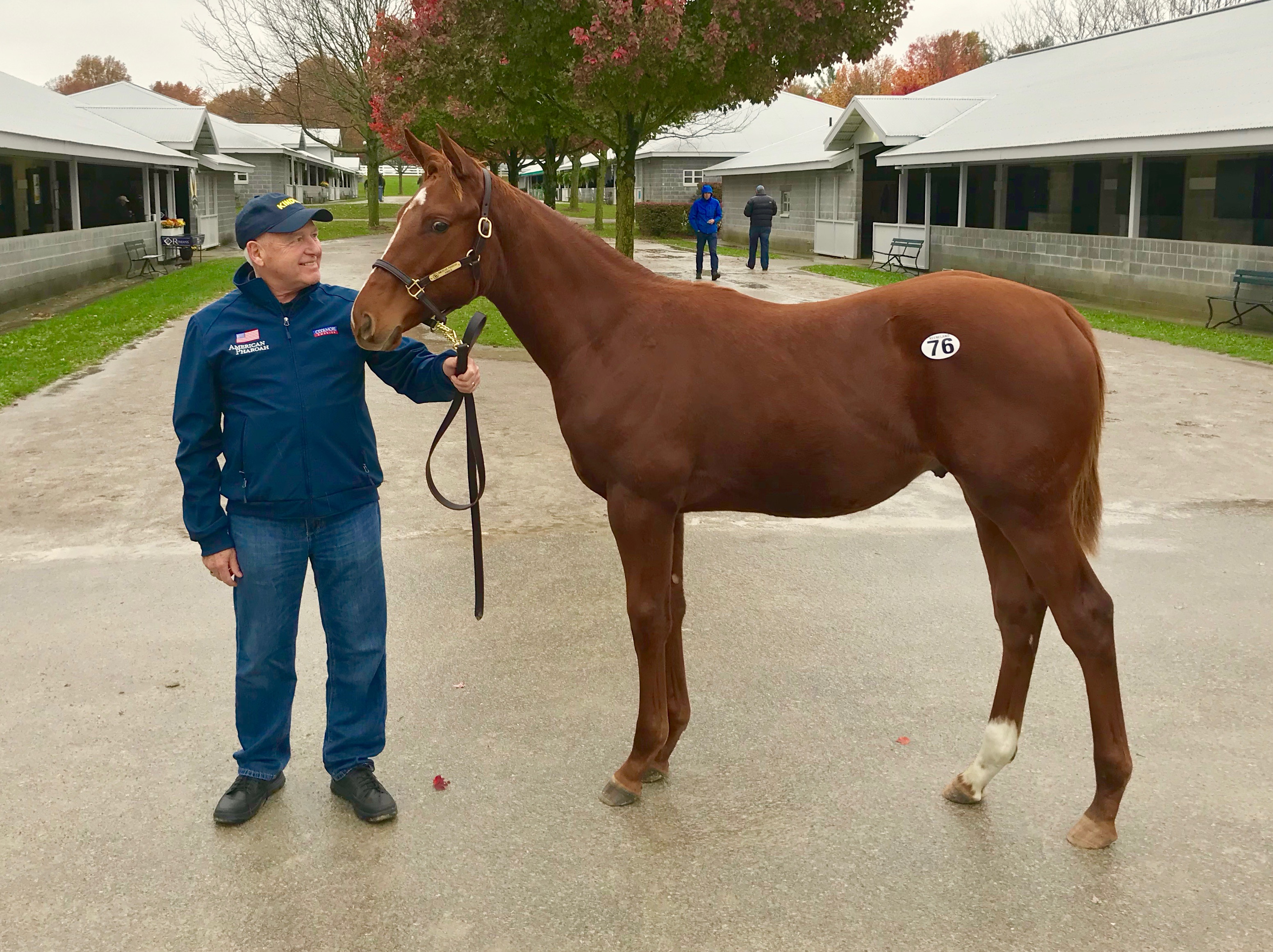
Jimmy Bell, president of Sheikh Mohammed’s Darley operation at Jonabell Farm in Lexington, said Sheikh Mohammed was taken with the colt when he saw him for the first time earlier Monday.
“Sheikh Mohammed saw him at the barn and loved him very, very much,” Bell said. “In the walking ring, he was all class and had a lot of presence about him. He really liked him from the first time he set his eyes on him.”
O’Callaghan said having prominent buyers like Godolphin battling with representatives of Coolmore Stud is what consignors strive for.
“The sheikh, I knew when he saw him today, his eyes just lit up, and I just had a feeling he was going to try hard to buy him,” O’Callaghan said. “Who knew it was going to be that level, but it took a monumental effort to outbid Coolmore. It’s the perfect scenario for any of us. That’s what we all dream of, two of the great racing powers get stuck on your horse and go at it. We’re just lucky it happened to us today.”
Meredith Daugherty contributed to this story.


